THE R ECORD


















Bishop-author analyses the intriguing phenomenon of new movements in the Catholic Church at Cathedral book launch
BY BRIDGET SPINKSSYDNEY Auxiliary Bishop
Julian Porteous’ latest book, A New Wine and Fresh Skins, sold out at its Western Australian launch at St Mary’s Cathedral parish centre on
6 October.
The book tracks the growth of the new “ecclesial movements” of the Church, a term which came into common parlance about 20 years ago to describe the new and rapidly growing Catholic movements springing up in the Church throughout the 20th century, often
With
after Vatican II. The words “capture an emerging reality, post Vatican II” of a “new and particular dimensions to the work of the Holy Spirit in our time,” Bishop Porteous said.
The Bishop placed the new movements in the context of the overall Church, which Pope John Paul II described as a ‘movement’ in itself.
“The Church, in its essence, is a spiritual movement in the world. It takes structure, because it has to, it is a human reality but it has an
Please turn to Page 3





What are we doing in Perth to celebrate?
11am
Mass at St Mary’s Cathedral, celebrated by Auxiliary Bishop Don Sproxton
1-7pm



Editor
Festivities get under way at the University of Notre Dame, Fremantle at 1pm. The campus will come alive with the story of Mary MacKillop’s life, a variety of street stalls, music, games and the opportunity to watch the canonisation taking place in Rome, streamed ‘live’ into lecture theatres and halls.
Remember, when it is 1pm in Perth, it is 7am in Rome so you will be able to see how St Peter’s Basilica and square will fill with up to 50,000 international pilgrims in Rome for the event.
Perth Archbishop Barry Hickey has declared the Festival at Fremantle UNDA as the official event for Perth for the afternoon.
2.15pm
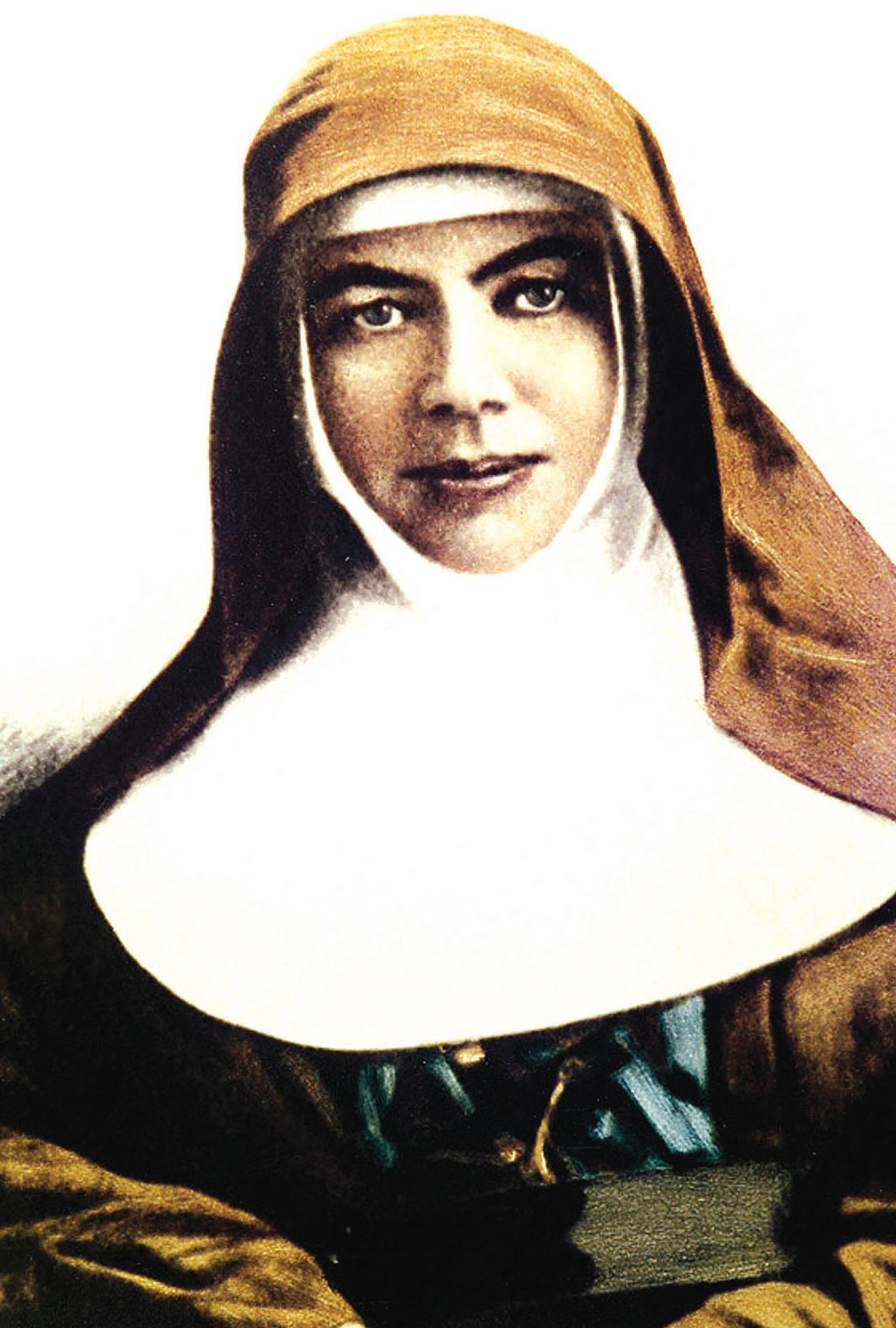
Our man in Rome ...
The Record’s Anthony Barich leaves Perth on 13 October at 6am with Mary MacKillop Ballajura parish priest Fr John Jegorow and over 50 parishioners to walk in the footsteps of Mary MacKillop and be in Rome to witness the canonisation of their parish’s patron saint.
Around 20 friends of the parishioners will meet the group in Rome. To acknowledge the part the Jesuits played in Mary MacKillop’s life, Fr Jegorow will celebrate Mass at 10am on 16 October to mark the canonisation vigil. This will be held in the room where St Ignatius of Loyola died in Rome in the Church of The Gesu, the mother church of the Jesuits. From 19 November onwards, Fr Jegorow will lead the parishioners on a trip to the Holy Land and walk in the footsteps of Jesus. The trip will culminate with a last Mass at Emmaus on All Saints Day.
The Record has signed a deal with Rome-based television news agency and documentary maker, Rome Reports, to bring our readers a special WEB BROADCAST from Rome.



Peter Rosengren editor@therecord.com.au
Journalists
Bridget Spinks baspinks@therecord.com.au
Mark Reidy mreidy@therecord.com.au
Anthony Barich abarich@therecord.com.au
A celebratory cruise will ferry 20 Sisters of St Joseph of the Sacred Heart and 120 associates of the Josephites from Barrack St down the Swan River to Fremantle to join in the festivities at the University of Notre Dame in the
Parish Priest delighted
Drill Hall in Mouat St. The ferry will arrive at 3.15pm into Fremantle where a bus will pick up passengers and drop them off at the Drill Hall. Due to popularity, this ferry trip has already been booked out.
Fr John Jegorow, parish priest of the Perth parish named for Australia’s first official saint, says:
“Like every saint, she’s our model because of her closeness to God and for us to emulate. Some of the things that enabled her to be close to God were that she had the strength of character not to criticise anyone publicly; she never said a bad word about anyone. She never recorded anything although
4.30pm
Parishioners of Mary MacKillop Ballajura can watch the direct telecast on the big screen at the parish. Bring a plate to share and watch it as a group. For more information, call 9249 1247.
she might have had a private moan, but she basically rolled up her sleeves and got on with it. That’s what I love about her.
“She acted on what she believed. She didn’t just sit around and wait for someone else to do it for her. At the same time, she had this extraordinary trust in providence. She wouldn’t let herself plan too far ahead, she wouldn’t speculate about what will or won’t happen. She would allow it to happen. She trusted in God’s providence. She was
Visit our web site at www.therecord. com.au on Thursday, 14 October to watch this special presentation online in anticipation of all the action.
a person who lived in the present and was conscious of the sacredness of the present moment and the dignity of the people around her, whereas we, on the other hand, either live in the past too much or we spend too much time worrying about the future.
He said he and many parishioners have been planning this trip for about three years, “So when the announcement was made in February, some of us metaphorically had our bags packed and bought our tickets the next day.”
Tuesdays 9.30am -12pm, Julian of Norwich “…all shall be well…”
Stephanie Woods
- 3.30pm, Finding God in all Things: The Spirituality of Teilhard de Chardin Mr John Auer
Thursdays 9.30am – 12pm, Teresa, John and Therese: Spirituality of the Carmelite Doctors Miss Michelle Jones 1.00pm - 3.30pm, Mary, Mother of God and first Disciple! Mrs Jan O’Connor
Fridays 9.30am - 12pm, Women as Peacemakers: the Spirituality of Non-Violence Mrs Judith Woodward, Mrs Ann Graham, Mrs Ann Semaan, Mrs Grace Reid EVENING
Mon 25 Oct - Wed 1 Dec 6 WEEKS COST $35
Mondays Beginning Theology Sr Philomena Burrell
Following Christ in the Third Age of Life Mr John Auer
Wednesdays “Prophetic Voices – Old and New” Mrs Stephanie Woods



Christian Worship - Christian Ritual: Celebrating Our Faith Sr Philomena Burrell
To register or for more information, contact Maranatha office: Phone: (08) 9241
In Rome on Saturday, 25 September, over 25,000 mainly young people from 57 countries attended the celebration of the beatification of Chiara ‘Luce’ Badano, who died in 1990 at just 18 years of age.
Here, in Perth, the celebration continued with a thanksgiving mass for her beatification celebrated by Archbishop Hickey on Sunday, 26 September at the Cathedral.
Chiara ‘Luce’ Badano, whose name means ‘clear light’, did not perform miracles or do anything extraordinary; instead, she is a shining example of how an ordinary life can be transformed by living a Gospel life and putting God ahead of everything else.
Archbishop Hickey spoke of how Chiara Badano gives the youth of today an example of how it is possible to live for Jesus in everyday life, even in the modern world.
He called Chiara a patron of the youth and encouraged them to pray to her when faced with difficulties in their own lives.
Through the example of how she lived during her illness, Chiara showed us how to offer our sufferings up, as Jesus did when He felt forsaken on the cross, to bring unity between God and man.
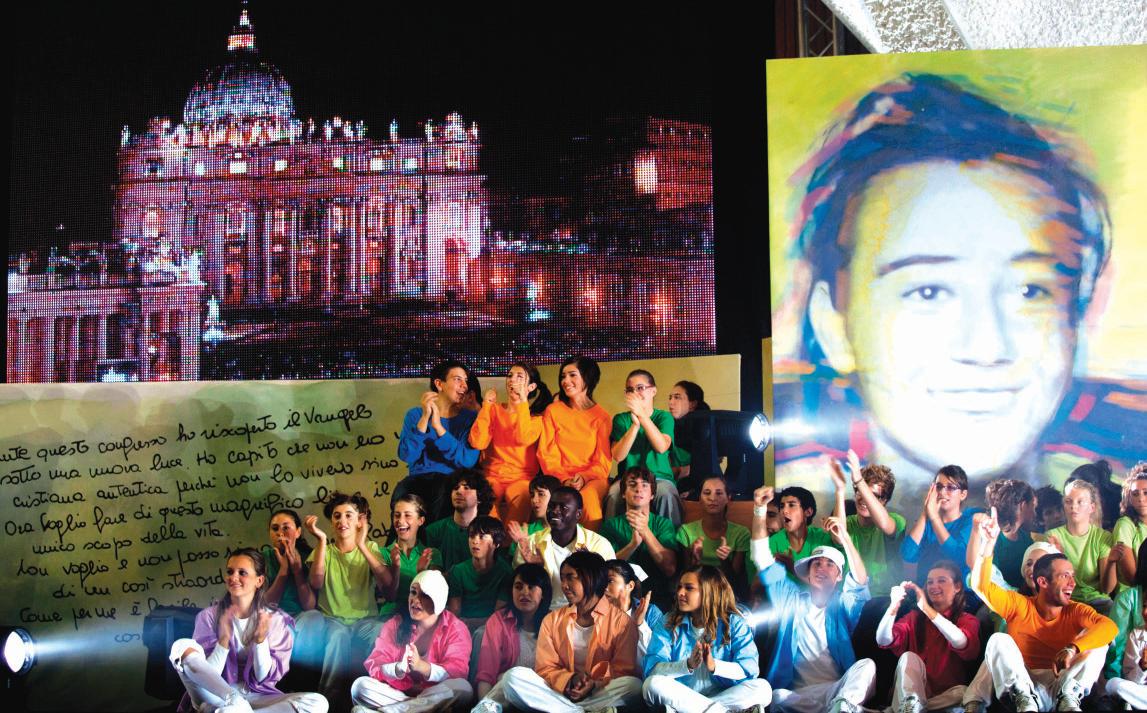
When she was only nine, Chiara first met the spirituality of unity of the Focolare Movement, founded by Chiara Lubich, where she learnt about living for unity among peoples and with God, by loving all
those around us. This had a profound impact on her life.
In the first letter she and her friend wrote together to Chiara Lubich, they said: “With the Gospel tucked underarm, we will do great
things.” This is how Chiara Luce’s race began, her marvellous story of love with Jesus. And she never turned back again, not even when diagnosed with a life-threatening illness.
Continued from Page 1 inner life and dynamism which is spiritual,” Bishop Porteous said.
“The Church began by the outpouring of the Holy Spirit and throughout the history of the Church there is constant witness to particular impulses of the Spirit,” he said.
Bishop Julian said his book was “not meant to be comprehensive” but meant to help understand what is happening in the Church today in the context of other movements in the history of the Church such as ‘Monasticism’ in the third century and the ‘Franciscan movement’ in the twelfth.
Today, there are hundreds of movements engaging hundreds of thousands of people across the world. These movements have been an ‘experience of grace,’ a work of the Holy Spirit, he said.

In 1983, the Pontifical Council for the Laity organised a meeting of leaders of various international movements such as Communion and Liberation, Community of Sant’Egidio, L’Arche, Opus Dei, Society of St Francis de Sales and others.
In Perth, members from Couples for Christ, Emmanuel Community, Communion and Liberation and the Neo-Catechumenal Way and others attended the launch.
Bishop Julian said that the movements have “reordered” the practice of the faith from private practice to a renewed emphasis of public practice with a missionary
zeal. After they become established and grow in numbers, they begin to develop in many ways.
“As the communities mature, they’re moving in to serve the Church in various ways by bringing their gifts to bear on the challenges the Church is facing at this time,” he said.
“One of the things the new movements have done is say ‘we’ll go out into the streets, we’ll do things publicly to testify to our faith,’” Bishop Julian said.
“One of the things I say is, we Catholics have to be seen and heard. The time has passed whereby we should retire into ourselves. It is not good enough to have things safe and comfortable in the Church, obviously that is good but we need to be doing things, living and witnessing out there in society. The time has come. No more silence, no more invisibility. The time has come to be seen and heard,” he said.
Bishop Julian, who wrote the book while on Sabbatical, intended it for two main audiences; firstly, for those who are not necessarily involved in movements, but are curious about them, possibly sceptical or uncertain of their place in the Church and secondly, for those who are involved in the movements.
He said that while people involved in movements can have a “deep appreciation of the grace of the charism” that they have received, there is a danger if they limit their vision to their own experience and community.
“The maturity will come to communities when they are able to see and understand their place and the contribution that they can make to the life and mission of the Church,” he said.
Are you part of one of the new communities? What has been your experience? Send a letter to the Editor: editor@therecord.com.au
A New Wine and Fresh Skins: Ecclesial Movements in the Church by Bishop Julian Porteous is published by Connor Court Publishing, 177 pages, and available from The Record Bookshop for $24.95.


In Rome, Focolare President Maria Voce was among the attendees at the beatification. She claimed the ceremony as a historical moment, a confirmation by the Church that the spirituality of unity lived out can bring us to holiness. In Perth, over 100 people met in the Cathedral Parish Centre to hear more about Chiara Badano’s life. Some of the young members of the Focolare Movement also shared their experiences of living the Spirituality of Unity.
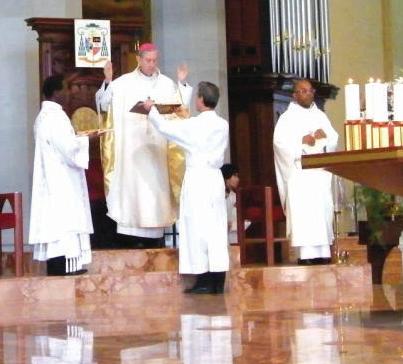
The Focolare Community will host a Family Day on 24 October at the Little Sisters of the Poor at Glendalough for all who are interested in learning more about this Spirituality.
Further information is available through the Focolare on 9349 4052.

In Rome on Saturday, 25 September, over 25,000 mainly young people from 57 countries attended the celebration of the beatification of Chiara ‘Luce’ Badano, who died in 1990 at just 18 years of age.
Here, in Perth, the celebration continued with a thanksgiving mass for her beatification celebrated by Archbishop Hickey on Sunday, 26 September at the Cathedral.
Chiara ‘Luce’ Badano, whose name means ‘clear light’, did not perform miracles or do anything extraordinary; instead, she is a shining example of how an ordinary life can be transformed by living a Gospel life and putting God ahead of everything else.
Archbishop Hickey spoke of how Chiara Badano gives the youth of today an example of how it is possible to live for Jesus in everyday life, even in the modern world.
He called Chiara a patron of the youth and encouraged them to pray to her when faced with difficulties in their own lives.
Through the example of how she lived during her illness, Chiara showed us how to offer our sufferings up, as Jesus did when He felt forsaken on the cross, to bring unity between God and man.

When she was only nine, Chiara first met the spirituality of unity of the Focolare Movement, founded by Chiara Lubich, where she learnt about living for unity among peoples and with God, by loving all
those around us. This had a profound impact on her life.
In the first letter she and her friend wrote together to Chiara Lubich, they said: “With the Gospel tucked underarm, we will do great
things.” This is how Chiara Luce’s race began, her marvellous story of love with Jesus. And she never turned back again, not even when diagnosed with a life-threatening illness.
Continued from Page 1 inner life and dynamism which is spiritual,” Bishop Porteous said.
“The Church began by the outpouring of the Holy Spirit and throughout the history of the Church there is constant witness to particular impulses of the Spirit,” he said.
Bishop Julian said his book was “not meant to be comprehensive” but meant to help understand what is happening in the Church today in the context of other movements in the history of the Church such as ‘Monasticism’ in the third century and the ‘Franciscan movement’ in the twelfth.
Today, there are hundreds of movements engaging hundreds of thousands of people across the world. These movements have been an ‘experience of grace,’ a work of the Holy Spirit, he said.

In 1983, the Pontifical Council for the Laity organised a meeting of leaders of various international movements such as Communion and Liberation, Community of Sant’Egidio, L’Arche, Opus Dei, Society of St Francis de Sales and others.
In Perth, members from Couples for Christ, Emmanuel Community, Communion and Liberation and the Neo-Catechumenal Way and others attended the launch.
Bishop Julian said that the movements have “reordered” the practice of the faith from private practice to a renewed emphasis of public practice with a missionary
zeal. After they become established and grow in numbers, they begin to develop in many ways.
“As the communities mature, they’re moving in to serve the Church in various ways by bringing their gifts to bear on the challenges the Church is facing at this time,” he said.
“One of the things the new movements have done is say ‘we’ll go out into the streets, we’ll do things publicly to testify to our faith,’” Bishop Julian said.
“One of the things I say is, we Catholics have to be seen and heard. The time has passed whereby we should retire into ourselves. It is not good enough to have things safe and comfortable in the Church, obviously that is good but we need to be doing things, living and witnessing out there in society. The time has come. No more silence, no more invisibility. The time has come to be seen and heard,” he said.
Bishop Julian, who wrote the book while on Sabbatical, intended it for two main audiences; firstly, for those who are not necessarily involved in movements, but are curious about them, possibly sceptical or uncertain of their place in the Church and secondly, for those who are involved in the movements.
He said that while people involved in movements can have a “deep appreciation of the grace of the charism” that they have received, there is a danger if they limit their vision to their own experience and community.
“The maturity will come to communities when they are able to see and understand their place and the contribution that they can make to the life and mission of the Church,” he said.
Are you part of one of the new communities? What has been your experience? Send a letter to the Editor: editor@therecord.com.au
A New Wine and Fresh Skins: Ecclesial Movements in the Church by Bishop Julian Porteous is published by Connor Court Publishing, 177 pages, and available from The Record Bookshop for $24.95.


In Rome, Focolare President Maria Voce was among the attendees at the beatification. She claimed the ceremony as a historical moment, a confirmation by the Church that the spirituality of unity lived out can bring us to holiness. In Perth, over 100 people met in the Cathedral Parish Centre to hear more about Chiara Badano’s life. Some of the young members of the Focolare Movement also shared their experiences of living the Spirituality of Unity.

The Focolare Community will host a Family Day on 24 October at the Little Sisters of the Poor at Glendalough for all who are interested in learning more about this Spirituality.
Further information is available through the Focolare on 9349 4052.


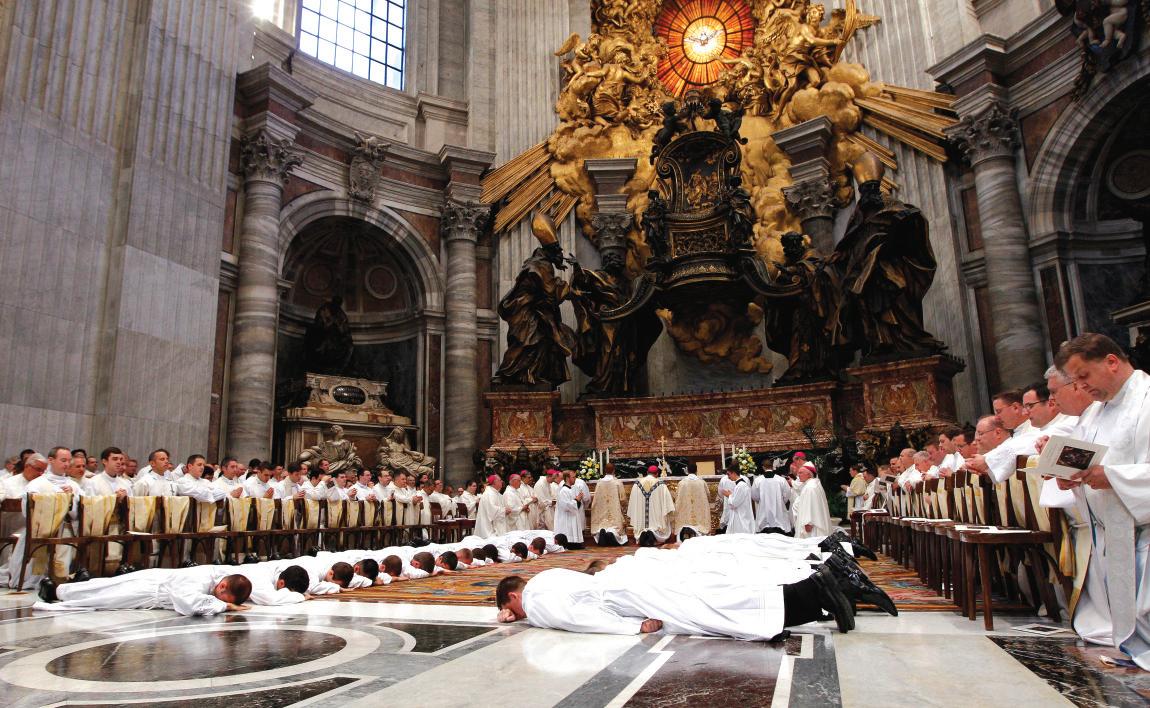
A roundup of events in the Archdiocese
St Mary’s Cathedral, Perth
Praise Meeting
A journey of Intercessory Prayer, Revelation and Healing by Kaye Rollings (Flame Ministries International). Please bring a Bible. Enq: 9382 3668 or 0439 981 515.
When: Every Thursday, 7.45pm at 450 Hay St, Perth.
St Joseph’s, Bassendean
October Sunday Sesh
Mass followed by formation for young people (15–35) on Salvation by guest speaker, Fr Jim Shelton. The evening will include music, activities, prayer time and group discussions. Enq: call CYM 9422 7912 or visit www.cym.com. au.
When: 6pm on 24 October at St Joseph’s Parish, 22 Hamilton St, Bassendean.
World Youth Day 2011 Pilgrimage Meeting
Catholic Youth Ministry is organising the official Archdiocese of
Perth pilgrimage to World Youth Day in Madrid next year. Are you thinking of going but want more details? This information night will help you discern what to do. Go to www.cym.com.au and fill out an expression of interest form or phone 9422 7912.
When: 7.30pm on 25 October at Catholic Pastoral Centre, 40a Mary St, Highgate.
Catholic Faith Renewal Evening -
Songs of Praise Sharing by a priest followed by Thanksgiving Mass and then light refreshments. All welcome to attend and bring family and friends. Enq: Kathy 9295 0913, Ann: 0412 166 164 or catholicfaithrenewal@gmail.com.
When: 7.30pm every first Friday of the month at Sts John and Paul Parish, Pinetree Gully Rd, Willetton.
Healing Mass Reconciliation, praise and worship, exposition of the Blessed Sacrament, Benediction, anointing of the sick and special blessing. All welcome. Enq: Priscilla 0433 457 352, Catherine 0433 923 083 or Mary-Ann 0409 672 304.
When: 7pm every first Friday of
BY ANTHONY BARICHPerth man Mark Payton has been ordained to the diaconate at St Peter’s Basilica in Rome with 29 other seminarians from the Pontifical North American College on 7 October.
Mark, who turned 35 last month, entered St Charles Seminary, Guildford in 2002 before joining the Pontifical North American College in 2007.
He will spend another year in Rome to complete his Licentiate in
Spirituality at the Angelicum before returning to the Archdiocese of Perth to be a priest.
St Charles Seminary Rector Monsignor Kevin Long was delighted for Deacon Payton.
“Mark takes both his spiritual and academic formation very seriously.
“He is a prayerful, generous and serious young man excited by the challenge of spreading the Gospel here in the Archdiocese in the midst of the contemporary culture,” Mgr Long said.
A joy-filled moment: Pontifical North American College seminarian Anthony Kruse of the Archdiocese of Dubuque, Iowa, carries Offertory gifts after being ordained as a deacon in St Peter’s Basilica at the Vatican on 7 October. Deacon Mark Payton of Perth is at right. Thirty seminarians from the US national seminary, which also accepts some students from outside the US such as Deacon Payton, were ordained as deacons.
Prior to being ordained, seminarians, bottom left, lie prostrate as the Litany of the Saints is chanted during the ceremony. The Litany asks those who are in Heaven to intercede for those to be ordained for the service of the Gospel. At the conclusion of the ceremony, below, the new deacons process out of St Peter’s Basilica.
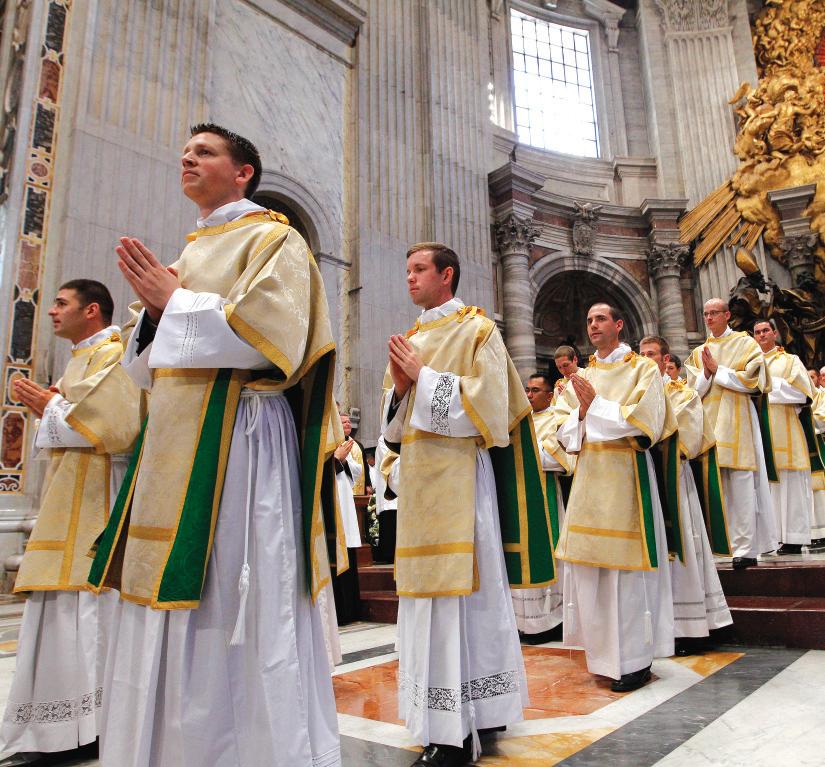
the month at St Peter’s Parish, Wood St, Bedford.
The Saint Vincent De Paul UWA
Buddy Day
The SVDP is looking for volunteers for an Australian-themed Christmas Buddy Day that will be held on 27 November. Volunteers will be working with children from disadvantaged backgrounds on the day with training provided beforehand.
The SVDP group on campus at the University of Western Australia regularly hold these days every few months. Contact James Soresi on 9448 8427 or 0434 216 679 for more information or to sign up.
When: 27 November. More details TBC but the group will meet in Perth CBD and transport has been organised.
Our Lady of the Mission, Whitford
Annual Dinner Dance/Fr Joseph’s 40th Birthday Celebration A smorgasbord/buffet Meal and DJ: Energy Entertainment - Dune has been planned at Hillary’s Yacht Club. Tickets $45.00 can be bought/reserved by calling the parish office this week on 9307 2776. No BYO (licensed premises). Dress after 5/cocktail. Enq: Pauline 9401 8815.
When: 7pm on 12 November at Hillary’s Yacht Club.
 BY PETER ROSENGREN
BY PETER ROSENGREN
Hundreds gathered in Good Shepherd Parish, Kelmscott, to farewell Parish Priest Fr Francis Sundararajan on 3 October.
Fr Francis, who has served as Assistant and Parish Priest for almost six years, will be a missionary in Papua New Guinea. He will be working at Alotau, an isolated area at the country’s far eastern tip.
After the 10am Sunday Mass, parishioners assembled in the parish hall for a social gathering and formal farewell to their Parish priest, including lunch and music performed by local musicians.
Parishioner Loreto Bennets paid tribute to the work of Fr Sundararajan since he came to the parish and his tireless efforts to
build up parish life. Parishioner and Knights of the Southern Cross representative Neville Voysey (pictured above) presented Fr Francis with a laptop computer from the Knights already configured to Fr Francis’ needs but noted that Alotau is so isolated he will need to walk several miles from where he is based in order to be able to connect it to the Internet.
A collection was taken and presented to Fr Francis for his missionary work and to establish his mission.
Fr Francis, who was trained at the Redemptoris Mater Archdiocesan missionary Seminary in Morley, run under the auspices of the Neocatechumenal Way, will join four other mission families in Alotau.
 BY DEANA PULLELLA St Vincent de Paul Society WA
BY DEANA PULLELLA St Vincent de Paul Society WA
The St Vincent de Paul Society’s Osborne Park Depot experienced an extremely demanding winter this year recording a 20 per cent increase in the amount of welfare assistance distributed to the WA community from April to June in 2010.
Household furniture and items in constant demand are single beds
and bases, mattresses, couches, tables and chairs, wardrobes and chests of drawers.
The increase in the number of requests for household goods by the West Australian community has left the Osborne Park Depot struggling to keep up with demand and fearful that requests received heading into the busy Christmas and New Year period will be difficult to respond to.
The Society is urging those in
No one should have to know this
No one should have to know how to keep their family warm and fed in winter when there is simply not enough money left in the family budget to pay the utility bills and buy food, yet thousands of West Australians do.
This year, the St Vincent de Paul Society approached some of Australia’s most disadvantaged individuals who are experiencing hardship and asked them to share what they do to survive on a daily basis.
Some said they survived sleeping on the streets huddled up in groups for extra security and protection, while others shared how they managed to feed their family with less than $20 a week, struggling to get their children to school with full stomachs ready for the day of learning ahead.
While each individual response was unique to their specific situation, there was one thing they all had in common – these people know things no one should.
The role of the St Vincent de Paul Society is to provide a helping hand to people in times of need through the core work of Home Visitation. Every year in WA, Society volunteers visit an average of 20,000 homes in an effort to deliver hope, comfort and dignity in the form of food, clothing, furniture, bedding, assistance with utility bills, advocacy and support.
Winter is historically the busiest time of the year for the St Vincent de Paul Society and with household costs rising, this year’s

Nowhere: Harrold, 49, is homeless and representative of the problems people without a home face on a daily basis.
PHOTO: SVDP SOCIETYWinter Appeal was more important than ever. During the months of May and June alone, the amount of Home Visitations had increased by 17 per cent with a total of 3,000 homes attended in that period. Of those households, the three top basic necessities requested were food, assistance with utility bills and bedding – further indicating that the provision of basic everyday necessities is what continues to keep families and individuals in their homes and off the streets.
The 2010 Winter Appeal reached its target of $600,000 thanks to the West Australian community and loyal donors of the St Vincent de Paul Society. These funds are directed straight back into the community and used to respond to every genuine request for assistance until the end of the year when the Christmas Appeal begins in November. On behalf of the thousands it assists, the Society is, as always, grateful for the community’s generosity.

a position to do so, to donate any unwanted household goods and furniture (in good, useable condition) to the Depot to increase its stock levels.
The Depot is located at 59 Edward Street, Osborne Park and donations can be received Monday – Friday between the hours of 8am and 4pm.
Residential/commercial pickups can be arranged by phoning 9444 5622.

Up to 100 people from the Voice of the Voiceless Ministry prayed the Rosary and a reflection on Blessed Mary MacKillop on the South Perth foreshore in a public witness of faith on 9 October.
The ministry was established by Fr Nicholas Nweke, a Perth priest originally from Nigeria; many Perth residents who migrated here from Africa are participants.
The event, which drew Catholics from parishes in Ellenbrook, Northbridge, Willetton, Gosnells, Canning Vale, Lockridge, Dianella, Scarborough, Cloverdale, Belmont, Balcatta, Thornlie and Maddington, was organised as a preparation for the 17 October canonisation of Blessed MacKillop in Rome by Pope Benedict XVI.
ANTHONY BARICH



“Never see a need without trying to remedy it” lêáÖáå~ä=oìäÉ=NUST


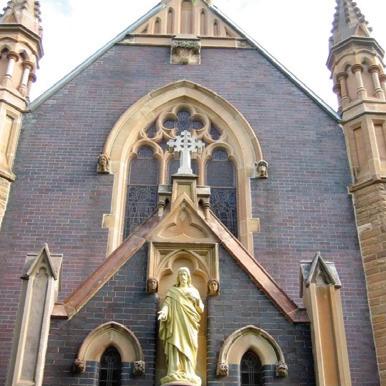
j~êó j~Åháääçé cÉëíáî~ä
pìåÇ~ó=NT=lÅíçÄÉê NKMMéã=J=TKMMéã qÜÉ=råáîÉêëáíó=çÑ=kçíêÉ=a~ãÉ=^ìëíê~äá~ jçì~í=píêÉÉíI=cêÉã~åíäÉ
qÜÉ=Å~åçåáë~íáçå=çÑ=^ìëíê~äá~Ûë=Ñáêëí=p~áåíI=_äÉëëÉÇ j~êó=j~Åháääçé=í~âÉë=éä~ÅÉ=çå=pìåÇ~ó=NT=lÅíçÄÉê
OMNMK=qÜÉ=råáîÉêëáíó=çÑ=kçíêÉ=a~ãÉ=^ìëíê~äá~=áë ÅÉäÉÄê~íáåÖ=íÜáë=ëéÉÅá~ä=çÅÅ~ëáçå=ïáíÜ=íÜÉ=j~êó j~Åháääçé=cÉëíáî~ä=áå=íÜÉ=ëíêÉÉíë=çÑ=çìê=cêÉã~åíäÉ `~ãéìë=Ejçì~í=~åÇ=`êçâÉ=píêÉÉíFK
pÅÜÉÇìäÉ=Ñçê=íÜÉ=cÉëíáî~ä NKMMéãcÉëíáî~ä=ÄÉÖáåë
PKPMéã^êêáî~ä=çÑ=íÜÉ=páëíÉêë=çÑ=pí=gçëÉéÜ PKQRéãlÑÑáÅá~ä=tÉäÅçãÉ QKPMéã`~åçåáë~íáçå=ÄÉ~ãÉÇ=äáîÉ=Ñêçã=oçãÉ SKMMéãcÉëíáî~ä=ÅçåíáåìÉë TKMMéãcÉëíáî~ä=ÉåÇë
qÜÉ=`~ãéìë=ïáää=ÅçãÉ=~äáîÉ=ïáíÜ=íÜÉ=ëíçêó=çÑ=j~êó j~ÅháääçéÛë=äáÑÉI=~=î~êáÉíó=çÑ=ëíêÉÉí=ëí~ääëI=ãìëáÅI=Ö~ãÉë ~åÇ=íÜÉ=çééçêíìåáíó=íç=ï~íÅÜ=íÜÉ=Å~åçåáë~íáçå=í~âáåÖ éä~ÅÉ=áå=oçãÉI=ëíêÉ~ãÉÇ=ÚäáîÉÛ=áåíç=çìê=äÉÅíìêÉ=íÜÉ~íêÉë ~åÇ=Ü~ääëK
cçê=ãçêÉ=áåÑçêã~íáçå=Åçåí~Åí ã~êóKã~ÅâáääçéKÑÉëíáî~ä]åÇKÉÇìK~ì çê=îáëáí=ïïïKåÇKÉÇìK~ì
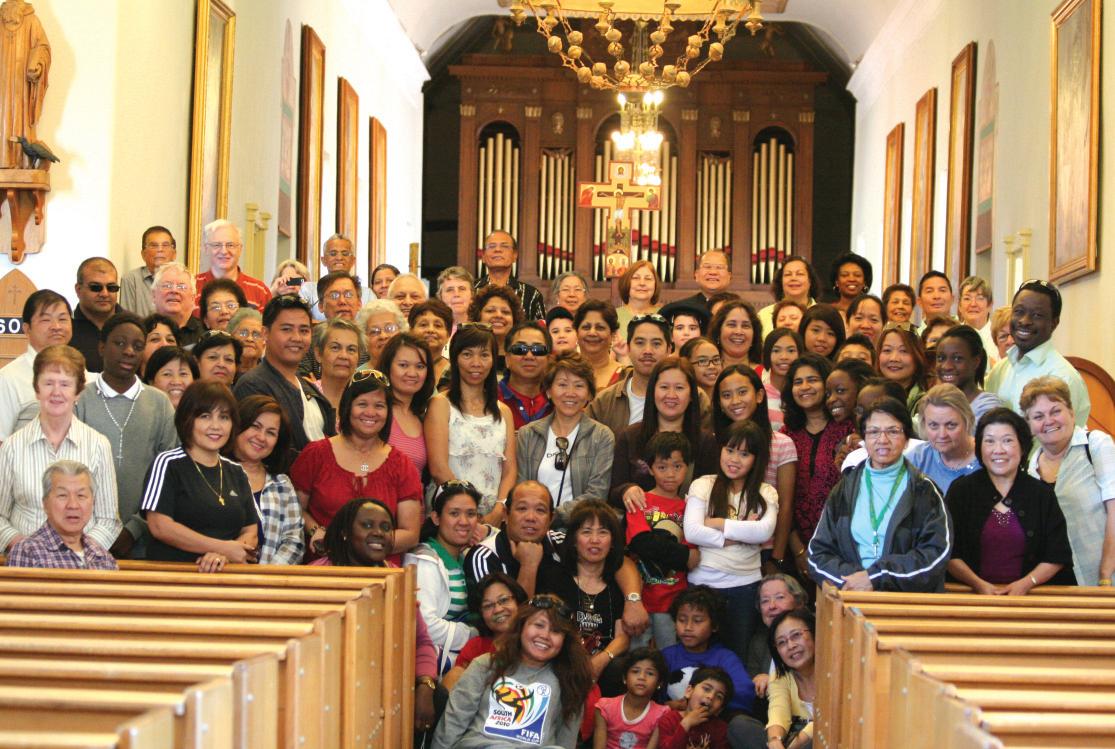
One of Perth’s newest parishes resurrected the tradition of pilgrimage for a special feast dayBY LYN HARKINS St Emilie de Vialar Parish Canning Vale
Last week on a beautiful spring morning, 90 pilgrims from St Emilie De Vialar Parish, Canning Vale set off in two buses to travel to Bullsbrook, Bindoon and New Norcia on a spiritual journey led by Parish Priest Fr Robert Carillo.
Everyone agreed it was a wonderful opportunity to leave behind for a day the mundane distractions of everyday life, to take in the green and inviting scenery, the flash of colourful wild flowers by the roadside, and the opportunity to reflect on a deeper level about one’s own faith, while opening ourselves to the spiritual experience we were about to share.
The first stop was at Bullsbrook where we visited Our Lady’s Shrine, built by the Sacri Association and dedicated to “Mary, the Mother of the Church” by Archbishop Foley in 1987.
Our organisers sorted us into groups of twelve so that we could become a ‘Human Rosary’, with a candle being passed from one person to the next as the decades were said.
It was a moving way to pray the Rosary and gave everyone an opportunity to participate.
After attempts to document the journey by taking a group photograph of the entire group at once, it was back on the buses and on our way.
Next stop was the delightful little stone church at Bindoon, St Anne’s. Dedicated in July 2004, this lovely place is very welcoming and prayerful.
It has a grotto, and nearby lodge which is offered to people who wish to come and stay on retreat.
Here in the church, Fr Robert celebrated Benediction and then we were treated to a welcome cuppa served by several ladies from the parish. It was also a great opportunity to socialise with each other.
Finally, we set off on the last leg

to New Norcia where we alighted at the Abbey Church for Mass. It was a fitting end for a spiritual journey to celebrate Eucharist in this place which houses the body of one of the first Benedictine Monks who helped establish the Catholic Church in Western Australia.
Dom Rosendo Salvado lies peacefully in this old building which echoes many past Masses and is steeped in years of spiritual reflection.
An appropriate place to open one’s heart and to reflect more deeply on faith, the meaning of Eucharist and community.
The rest of the day was filled with a picnic lunch in the shade, then some visited the Museum
and others took a tour of this interesting place, before it was back on the buses and home, tired but satisfied.
This was St Emilie’s first pilgrimage and such a great response from parishioners was very encouraging.
As it took place in the school holidays, many children were also able to come.
Most participants would agree that aside from the spiritual aspect of the day, it was also very rewarding to have an opportunity to talk with those whose face you know from Mass, but never seem to have the opportunity to talk to on a more intimate level.
It was an excellent day, and one we plan to repeat.

First soil turned as parish plans new church
The Visitation Parish of GinginChittering celebrated the approval of the new Divine Mercy Church at the new church site at Maryville in Lower Chittering with Mass, devotions and a talk on Divine Mercy by guest speaker Brother Stanley Villavicencio on 15 August, the Feast of the Assumption.
There was also a ceremonial ‘breaking of ground’, the blessing of a two metre high oil painting of the Divine Mercy image for the new church and blessing and insertion of a cross to mark the site of the future church altar.
George Lopez and the Bateman Divine Mercy prayer group led the chaplet at 3pm in chant for over 200 attendees.
Fr Paul Fox, Gingin parish priest, said that Gingin and Chittering

were expanding rapidly with a constant stream of new subdivisions and plans for a future satellite city in Chittering. “The new Divine Mercy Church will serve as a parish church and place of pilgrimage for the
VATICAN CITY (Zenit.org) - Benedict XVI is noting Thursday’s feast of Our Lady of the Rosary, encouraging the faithful to appreciate this traditional prayer.
The Pope spoke of the Rosary on 6 October at the conclusion of the general audience, when he offered his customary greeting to youth, the sick and newlyweds.

“October is the month of the Holy Rosary, which invites us to appreciate this prayer so dear to the tradition of the Christian people,” he said.
The Holy Father went on to invite youth “to make the Rosary your daily prayer.” He encouraged those suffering from illness to use the Rosary “to grow in confident abandonment in God’s hands.”
Finally, he exhorted newlyweds “to make of the Rosary a constant contemplation of the mysteries of Christ.”
Archdiocese,” he said. Fundraising is currently in full swing with donation forms inserted in this week’s issue of The Record. Fr Paul said he and the parish would greatly appreciate any support readers could offer for this worthy cause.




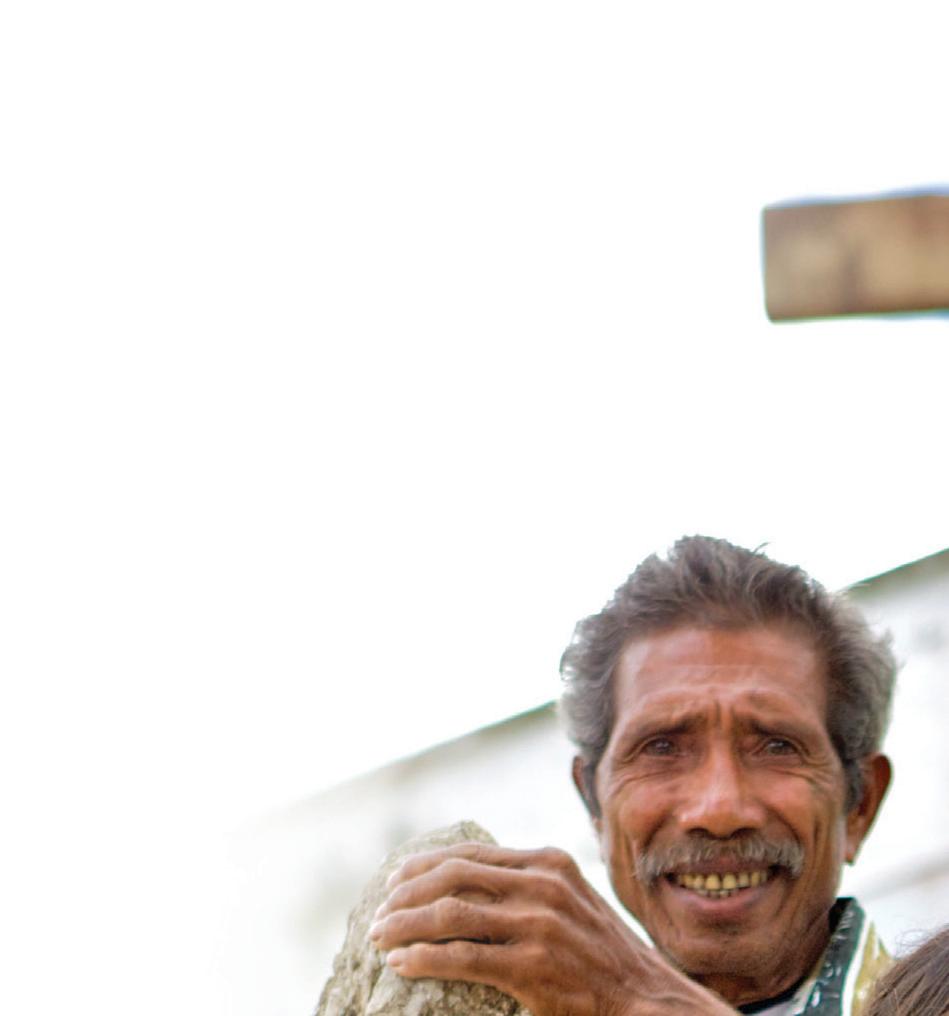
Stone by stone the people of Timor Leste are rebuilding their community.
Please give generously in your parish.
Visit catholicmission.org.au or call 1800 257 296 to donate now.




INC.
The Trustee of the KSC Education Foundation Inc (a project of the Knights of the Southern Cross) takes pleasure in again inviting applications from teachers of Religious Education in Catholic Schools in Western Australia to undertake further study for units in religious education and theology at the University of Notre Dame Australia in 2011.
Application forms and further information are available from:
The Trustee
KSC Education Foundation Inc. PO Box 136 BURSWOOD WA 6100 Telephone (08) 9470 4922
Applications close on 5th November 2010
James Woolsey, Director of the Central Intelligence Agency (1993-1995)
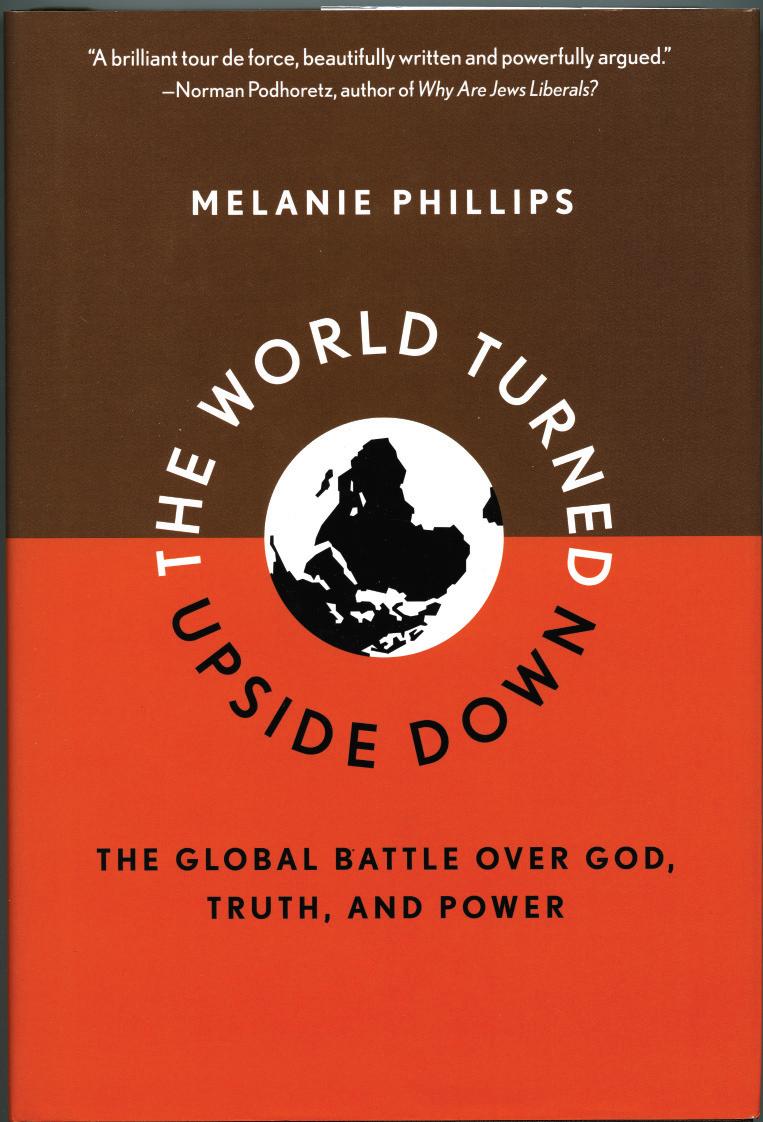

The occasion of the canonisation of Mary MacKillop is a great joy for everyone connected to it but, one imagines, most especially for the families of those whose prayers she answered with miracles of healing and life and for her spiritual daughters, the Sisters of St Joseph of the Sacred Heart, together with the wider Josephite family and all those who have ever been associated with them.
Her formal canonisation in Rome this Sunday is also something that has made all Australian Catholics proud of their faith and their Church and, in a wider way, makes many Australians feel that through her this country is recognised seriously in culture and history. It does not seem too great an exaggeration to say that the persistent foundress who, in her own lifetime was an obscure and occasionally persecuted figure known by relatively few people in this country, has managed to unite the entire country around the story of her life in a truly remarkable way.
There are a thousand lessons and a thousand editorials waiting to be written from the life of St Mary of the Cross, as she will be officially known by the time these few words are being read. But at the heart of her story is holiness. However, the question of what holiness actually is still remains largely a mystery to the vast majority of baptised Catholics and to the wider nation. Or, to put it another way, what most people think holiness is and what it really turns out to be are usually two completely different things. Part of the problem for Australians, just as St Mary of the Cross found through the experience of official persecution by Church bureaucrats, is that holiness is often erroneously assumed to be an experience of personal repression or of merely correct manners and behaviour. Viewed through contemporary Australian eyes, it might be tolerated in others as an eccentricity but it is not a pleasant experience that anyone wants for themselves.
PO Box 3075
Adelaide Tce PERTH WA 6832
editor@therecord.com.au
Tel: (08) 9220 5900
Fax: (08) 9325 4580
This is because many Australians misread the entire experience of Christianity as the B-grade movie you live when you don’t have a life. Christianity, they think, seems stale, repressive, rule-bound and dogmatic, a faith that depends for success on not living as one wishes to. If anything, it seems clear in the eyes of the majority of Australians that the words ‘Christianity’ and ‘freedom’ are antithetical.
But as the life of this remarkable woman shows, holiness is first, above all other things, an adventure. In fact, it is the grandest adventure of all. This means that, like World Youth Day in Sydney in 2008, the joyful occasion of Mary MacKillop’s canonisation is also another wonderful gift from God as an opportunity to reveal to the people of this country that Christianity is really all to do with the most important questions of our lives: why do I exist? what is the meaning of my own life? who am I? where am I going?
St Mary of the Cross answered all these questions, and more, with conviction at every level of her life. In doing so, she became something like a living signpost pointing straight at the true north of her heart, the One who had created her and all other human beings, the One who is the answer to the question of every human life. Therefore, among St Mary of the Cross’ many outstanding qualities, the power of her faith in God and of her love for God and others, like the conviction she was able to communicate of God’s loving reality, are the things that stand out so truly remarkably.
The life of St Mary of the Cross shows that holiness is really closeness to God, daily personal intimacy with the One who has created everything. Her life shows that Christianity is really the true shining, luminous path to the personal fulfillment of each of our own lives. In fact, what makes St Mary of the Cross so truly revolutionary, as it does all the saints, is that they show time and time again that it is holiness that is normality. Our society is deeply uncomfortable with words such as ‘holiness’ because it hardly understands the most basic things to do with God. But, once in a while, a Mary MacKillop comes along to remind us all with extraordinary clarity that it is God who is our true destiny.
The care of those who suffer from mental illness has never been a priority in Australian political life because there are so very few votes in the issue. Those who suffer mental illness are so often officially ignored and left to wear their crown of thorns for the rest of their lives with little or no help from governments, society and the health care system. As such, mental health care in this country has suffered chronic neglect at almost every level and in many regards the treatment of those who bear the burden of mental illness is Dickensian. Jail is often the destination of those who suffer.
It comes as little surprise to note this month’s report from the Victorian Women’s and Mental Health Network of the numerous cases of women who report sexual abuse, including rape, from male patients in mental health wards. It gives some idea of the unwillingness of governments to address the issue that it is standard practice across the country to place men and women suffering serious mental illness problems in mixed wards. There, male patients are relatively free to sexually assault female patients. It is obvious that, because for any woman such an experience cannot possibly aid the slow process of recovery, the best phrase for official policy is ‘sheer stupidity.’
“right” to die (suicide) or to kill (euthanasia) “with dignity”, voluntarily or not. This is a contrived right (claim).
Once euthanasia is legalised like abortion, it quickly gets out of control. We soon realise it is too late when it becomes clear that some lives have no value; that the vulnerable begin to think life is not worth living; and that doctors become corrupted by the killings and are no longer trusted.
Having watched with joy and thanksgiving the several hours of coverage provided by EWTN of the Holy Father’s trip to England and Scotland, I was eagerly awaiting The Record for photos and articles to share with my family and students. How disappointing was your coverage.
The wonderful images that I expected were overshadowed by the extensive exposure given to protesters in both the 22/9 and 29/9 editions.
It was sad to see wasted such a golden opportunity for promoting the noble and good. Evangelisation is a thankless task and I look to The Record to assist in this role – which it often does.
All the good ideas and thoughts expressed in editorials and long articles are diminished when powerful images of ugliness are given colourful and prominent exposure.
One expects that sort of message to be pushed by the secular press, but not by our own Record
Philip Haydon WoodlandsPolls show that most people favour euthanasia, but it seems what they really mean is that in compassion, they favour the switching off of life-support systems when they fail to resuscitate, and the giving of pain relief drugs which might shorten life as an unintended effect.
But this is not euthanasia, deliberate killing. It is the care and proper right to life with dignity until nature takes its course despite revival efforts. There is no such
Two Catholics from Sydney and four from New Zealand have been invested as knights and dames in one of the Church’s oldest Orders.
Sydney Archbishop Cardinal George Pell presided over the 10 October event at St Mary’s Cathedral, Sydney in the presence of more than 40 Knights and Dames of the NSW Equestrian Order of the Holy Sepulchre.
Sydney residents Fr John Knight of St Patrick’s Catholic Church, Sutherland, and Susan Coorey, an active member of the Archdiocese, joined two priests and a layman from New Zealand in receiving the honour.
The night also saw the elevation of several Knights to higher ranks within the order. Sydney Barrister Janet Coombs was created Dame Commander with a Star and former NSW Supreme Court Judge Barry O’Keefe QC was made Knight Commander with a Star.
Educator and Christian
“marriage”, adoption by same sex couples, euthanasia and divorce.
Recently I was very surprised to hear a priest, when asked why the above issues are not preached about from the pulpit, answer that, firstly priests are not knowledgeable enough on these issues and secondly, that some people are offended by the priest preaching about them.
Dr Bob Brown and his mentor, philosopher Peter Singer (of infanticide fame), with the Greens and others, think that human lives should be treated in some ways like animals’. They believe humans should live only as long as they are useful and not a burden on society. Then they should be put down (voluntarily or not) – just like on a cost/benefit efficient animal farm (without cruelty or “waste” of course!).
Some of these controllers even think it is “compassionate” and “social justice” for all this to happen for the relief of health resources, and for a better environment for the surviving fittest (since humans are the main cause of damage to the environment!).
They even want to “engineer” society – to breed the best, cull the worst and be rid of the useless with total control of priorities of when and where money is spent, what training, education and services to provide; and with whom we trade and deal.
The sign of a just and good society is the care it takes of the unborn, vulnerable, weak, elderly and disadvantaged, with compassion to natural end. Do we want to live like this or like on an animal farm?
Fr Bernard McGrath Bendigo VICJerome Gonzalez (The Record, 8 September) wrote, “We need to hear more about the one, holy Catholic, Apostolic Church and its faith.” Indeed we do: and we also need continuing education on the teaching of the Church on current reproductive technology – in vitro fertilisation, surrogacy, stem cell research - and moral issues – promiscuity, abortion (chemical and surgical), unmarried couples living together, homosexuality, same-sex
Brother Robert Wallace and barrister Francois Kunc SC were also elevated to Knight Commander with a Star.
The Equestrian Order of the Holy Sepulchre of Jerusalem dates back to 81AD when it is believed Pope St Anacletus assigned the custody of Christ’s tomb to a confraternity of hermits who were forerunners of the Order.
It was not until 1099, with the conquest of Jerusalem by the first Crusade, that the Order of the Holy Sepulchre took on a more recognisable form.
In 1888, Pope Leo XIII authorised the Order to give women similar honours and the same rights and privileges as the Knights.
Freedom Publishing has been given the Australian and New Zealand rights to publish Pope Benedict’s new book Jesus of Nazareth - Volume 2. The Pontiff’s newest tome will be published early next year in hardback followed by the paperback edition
Jesus did not cease to preach when what he said was difficult for some listeners to accept (John 6, Verses 52-73). In reference to a parish priest feeling he is not competent to preach on these issues, perhaps he could invite the Director of the Bioethics Centre, Reverend Dr Joseph Parkinson – who would be conversant with these issues – to preach in his parish.
We need regular homilies to remind and educate us about the truths of Catholicism and to guide us to understanding God’s plan for us.
VJ Studham InglewoodAlthough pro-lifers are accustomed to being reported negatively, press coverage of the “March for the Babies” in Victoria on Saturday, 9 September was outrageous.
False press reports were based on an AAP press release which gave the numbers of pro-life demonstrators at 400 and the number of counter-demonstrators as 200.
In fact, several thousand prolife demonstrators were confronted by a group of fewer than thirty counter demonstrators. AAP confirmed on Monday that the report of 400 was a “typo” and should have been 4,000 (itself an underestimate).
AAP further admits that its estimate of 200 “pro-choicers” was based on the counter-demonstrators’ estimate (the actual figure being in the twenties).
Suggestions that Australians overwhelmingly support the freedom to choose excruciatingly painful deaths for the unborn are false.
As demonstrated by the very large number of people who marched on Saturday, millions of Australians care passionately about the rights of the unborn.
Peter Kavanagh DLP Member for Western Victoria, Geelong
in 2012. The first volume in the series was published to a warm reception from most Catholic media outlets in 2006. The Pope has written over 100 books as Joseph Ratzinger and as Pope Benedict XVI.
VATICAN CITY (CNS) - The number of refugees is growing and resettlement space is shrinking, highlighting a need for international solutions, a Vatican official said. Archbishop Silvano Tomasi, who represents the Vatican to UN agencies in Geneva, told members of the executive committee of the UN High Commissioner for Refugees that he was particularly concerned with the issue of “refoulement,” the process by which a county forcibly returns refugees to their countries of origin. The extensive reported and unreported incidents of such return and “push-back” to unsafe countries show many vulnerable people are not receiving the protection they need, he said.
It exists, but often it’s not clear why. It usually thinks of itself as the poor cousin to the secular media. It hardly ever breaks big news. Often, its main purpose seems to be to protect the Church from bad news and the rule is usually that Catholics can’t be allowed to know. Often, it is the last to find out what’s going on. Is this what the Catholic media is meant to be?
BY DEAL HUDSONAs I write, there is a Catholic Press Conference being held at the Vatican, sponsored by the Pontifical Council for Social Communications. Three representatives were invited from each country, and one of them was Greg Erlandson, president of Our Sunday Visitor (one of the biggest Catholic newspapers in the US and also privately owned. - Ed).
Erlandson is an astute and experienced observer of Catholic media, and his comments to the conference, reported by the Catholic News Agency, are worth noting.
He described the vitality of Catholic media by referencing the many print magazines and newspapers, the growth in Catholic radio, and the ongoing success of EWTN. He also acknowledged the fact that a lot of Catholic publications are declining in readership and revenue.
On the positive side, he said the use of the Internet provides a lowcost way of reaching a large and diverse audience, facilitating a surge of Catholic web sites. (Remember that Pope Benedict XVI called for growth in Internet evangelisation in a Wednesday audience last May: “Employ these new technologies to make the Gospel known, so that the Good News of God’s infinite love for all people will resound in new ways across our increasingly technological world!”)
There was one point that raised a red flag for me. Erlandson echoed the concerns expressed in recent Vatican warnings about the blogosphere. When there is “a Babel of voices claiming to be Catholic,” he wonders how the new media will be held accountable, and how the oversight of the Church will find its way online.
In the past, this worry has been used by some Church leaders to try to squelch unwelcome commentary and reporting. I was the publisher of an independent Catholic print magazine, Crisis, for 12 years, and have now been the director of an independent Catholic web site, InsideCatholic.com, for more than three years.
The “oversight” of the Church is applied internally by faithful board and staff members working together for the apostolate. It’s not something applied from outside, like a high school teacher overseeing the publication of the

school newspaper. The cause of the recent concerns about the “Babel” of Catholic voices on the Internet is that some of the criticism of the Church leadership has not been well received by that leadership. Sometimes, there’s a good reason for that - there’s no place for gross inaccuracy, false accusations, groundless conspiracy theories, or angry denunciations.
Other times, however, Church leadership doesn’t appreciate demands for accountability and transparency, and they don’t like having their decisions secondguessed. But that is what the media does, whether Catholic or not.
You may remember the fury expressed by Fr Thomas Rosica, CSB, president of Canada’s Catholic TV network, Salt & Light, toward
EWTN’s Raymond Arroyo, after his comments on the funeral of the late Senator Ted Kennedy. Fr Rosica wrote, “Civility, charity, mercy and politeness seem to have dropped out of the pro-life lexicon.” But anyone who read Arroyo’s blog post was left scratching his head at what Rosica thought was uncharitable. There was nothing uncharitable there. The real
problem was that Arroyo expressed a point of view that Fr Rosica found objectionable, and so he attacked it as “lacking civility.”
Incidentally, Fr Rosica was recently named a consultor to the Pontifical Council for Social Communication, the sponsor of the Catholic Press Conference.
The fundamental problem with the Catholic media is that it has been built upon the legacy of diocesan newspapers, published by the bishops. These publications serve an important purpose, of course, but they are hardly platforms for reporting or opining on controversial issues involving Bishops and priests.
Erlandson wisely focuses on this point:
“My hope is that Church leaders are seeing that if they value their own media, and if they allow it to be transparent and honest, they will gain in credibility over the long haul. To do this well, however, will mean changing the media expectations of an institution that often sees its first responsibility to protect itself from bad news.”
He then makes a distinction between being a propagandist, which is basically what most diocesan papers have become, and being “collaborators with the Church, recognising that professional news coverage and solid features and special reports can genuinely help the adult faith formation of our Catholic audience.”
Erlandson adds that the collaboration he calls for is undermined by a growth in “distrust of institutions,” leading to a kind of “congregationalism” where Catholics who are at home in their parish feel less connected to their Bishop, the Vatican, or the universal Church itself. This also leads to a falling off of interest in Catholic media.
The result is both a latent suspicion of Church authorities and a lack of a felt need to know what the Church is saying about social or spiritual matters, two primary reasons to read the Catholic press.
The challenge facing Catholic media, especially in the digital age, is to not allow the ease of publication to become an excuse for sloppy, misinformed, or impulsive postings. The challenge facing Bishops and other clergy is to join in the process of Internet evangelisation rather than stand aloof, complaining about the occasional sharp e-mail or angry blog comment. InsideCatholic.com
Greg Erlandson on Catholic mediaPage 10
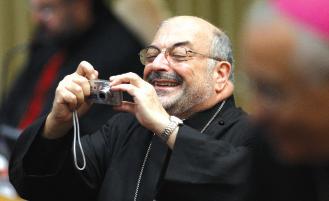
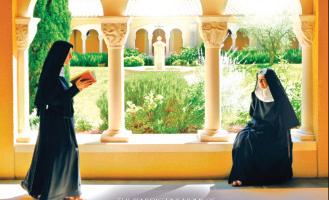
It exists, but often it’s not clear why. It usually thinks of itself as the poor cousin to the secular media. It hardly ever breaks big news. Often, its main purpose seems to be to protect the Church from bad news and the rule is usually that Catholics can’t be allowed to know. Often, it is the last to find out what’s going on. Is this what the Catholic media is meant to be?
BY DEAL HUDSONAs I write, there is a Catholic Press Conference being held at the Vatican, sponsored by the Pontifical Council for Social Communications. Three representatives were invited from each country, and one of them was Greg Erlandson, president of Our Sunday Visitor (one of the biggest Catholic newspapers in the US and also privately owned. - Ed).
Erlandson is an astute and experienced observer of Catholic media, and his comments to the conference, reported by the Catholic News Agency, are worth noting.
He described the vitality of Catholic media by referencing the many print magazines and newspapers, the growth in Catholic radio, and the ongoing success of EWTN. He also acknowledged the fact that a lot of Catholic publications are declining in readership and revenue.
On the positive side, he said the use of the Internet provides a lowcost way of reaching a large and diverse audience, facilitating a surge of Catholic web sites. (Remember that Pope Benedict XVI called for growth in Internet evangelisation in a Wednesday audience last May: “Employ these new technologies to make the Gospel known, so that the Good News of God’s infinite love for all people will resound in new ways across our increasingly technological world!”)
There was one point that raised a red flag for me. Erlandson echoed the concerns expressed in recent Vatican warnings about the blogosphere. When there is “a Babel of voices claiming to be Catholic,” he wonders how the new media will be held accountable, and how the oversight of the Church will find its way online.
In the past, this worry has been used by some Church leaders to try to squelch unwelcome commentary and reporting. I was the publisher of an independent Catholic print magazine, Crisis, for 12 years, and have now been the director of an independent Catholic web site, InsideCatholic.com, for more than three years.
The “oversight” of the Church is applied internally by faithful board and staff members working together for the apostolate. It’s not something applied from outside, like a high school teacher overseeing the publication of the

school newspaper. The cause of the recent concerns about the “Babel” of Catholic voices on the Internet is that some of the criticism of the Church leadership has not been well received by that leadership. Sometimes, there’s a good reason for that - there’s no place for gross inaccuracy, false accusations, groundless conspiracy theories, or angry denunciations.
Other times, however, Church leadership doesn’t appreciate demands for accountability and transparency, and they don’t like having their decisions secondguessed. But that is what the media does, whether Catholic or not.
You may remember the fury expressed by Fr Thomas Rosica, CSB, president of Canada’s Catholic TV network, Salt & Light, toward
EWTN’s Raymond Arroyo, after his comments on the funeral of the late Senator Ted Kennedy. Fr Rosica wrote, “Civility, charity, mercy and politeness seem to have dropped out of the pro-life lexicon.” But anyone who read Arroyo’s blog post was left scratching his head at what Rosica thought was uncharitable. There was nothing uncharitable there. The real
problem was that Arroyo expressed a point of view that Fr Rosica found objectionable, and so he attacked it as “lacking civility.”
Incidentally, Fr Rosica was recently named a consultor to the Pontifical Council for Social Communication, the sponsor of the Catholic Press Conference.
The fundamental problem with the Catholic media is that it has been built upon the legacy of diocesan newspapers, published by the bishops. These publications serve an important purpose, of course, but they are hardly platforms for reporting or opining on controversial issues involving Bishops and priests.
Erlandson wisely focuses on this point:
“My hope is that Church leaders are seeing that if they value their own media, and if they allow it to be transparent and honest, they will gain in credibility over the long haul. To do this well, however, will mean changing the media expectations of an institution that often sees its first responsibility to protect itself from bad news.”
He then makes a distinction between being a propagandist, which is basically what most diocesan papers have become, and being “collaborators with the Church, recognising that professional news coverage and solid features and special reports can genuinely help the adult faith formation of our Catholic audience.”
Erlandson adds that the collaboration he calls for is undermined by a growth in “distrust of institutions,” leading to a kind of “congregationalism” where Catholics who are at home in their parish feel less connected to their Bishop, the Vatican, or the universal Church itself. This also leads to a falling off of interest in Catholic media.
The result is both a latent suspicion of Church authorities and a lack of a felt need to know what the Church is saying about social or spiritual matters, two primary reasons to read the Catholic press.
The challenge facing Catholic media, especially in the digital age, is to not allow the ease of publication to become an excuse for sloppy, misinformed, or impulsive postings. The challenge facing Bishops and other clergy is to join in the process of Internet evangelisation rather than stand aloof, complaining about the occasional sharp e-mail or angry blog comment. InsideCatholic.com
Greg Erlandson on Catholic mediaPage 10


The publisher of one of the biggest Catholic papers in the US has spoken frankly about the Catholic media’s
real role
The Catholic press in the United States faces the challenges of writing for a Catholic population with a weakening identity and a distrust of institutions, the president of Our Sunday Visitor publishing has noted. However, he sees cause for hope in new technologies and a new generation of writers and editors.
Speaking to a meeting of the Catholic Press Congress (CPC) in Rome in early October, Gregory Erlandson of Indiana-based publishing house Our Sunday Visitor drew on his 30 years of experience as a Catholic reporter and publisher.
“It has been a very challenging field really since the Second Vatican Council, but most certainly since the 1990s. In the United States, Mass attendance, attendance at Catholic schools, numbers of priestly vocations, marriages, baptisms and more have all drifted lower,” he commented, noting that surveys suggest Catholic practice is in decline.
“On the surface, our Catholic media remains quite vital,” he said.
There are four major Catholic national weekly papers, 140 diocesan newspapers, and more than 100 magazines and major newsletters. There is a major Catholic television network in EWTN, more than 160 Catholic radio stations, and dozens of Catholic book publishers.
“But appearances can be deceiving,” he warned, noting the great financial stress on most publications. Those which are not owned by dioceses have generally seen a decline, as have diocesan newspapers which often benefit from mandatory purchases which are built into parish registrations of families and schools.
The Internet has had an impact on the Catholic press, with business models being “unclear or rapidly changing.” Changing demography is also a factor, with fewer young people being interested in Catholic news.
Erlandson listed three special problems for the Catholic press: a decline in knowledge about the faith; a growing distrust of institutions; and a resulting decline in Catholic identity.
“(W)e now have two generations of Catholics who have been significantly under-catechised in their own faith. A larger and larger share of our potential audience often does not understand Catholic vocabulary or Catholic concepts.”
He cited University of Notre Dame professor John Cavadini, who has said contemporary religious illiteracy is worse than partial blindness but something like “retinal detachment” in which “the system in which the words (of Catholicism) made sense is failing.”
Many publications are dependent on a shrinking older audience while many Catholics have a poor understanding of what the Church teaches and why.
Discussing the distrust of institutions, Erlandson said the sexual abuse crisis perhaps made this
worse for the Church but that the lack of trust is part of broader cultural trends. There is a kind of “congregationalism” in the Church where Catholics feel less of a bond with the Bishop or with national and international Catholic institutions even though they may like their priest and their parish.
The secular media shares this distrust and most Catholics get most of their news from this source.
“The result is both a latent suspicion of Church authorities and a lack of a felt need to know what the Church is saying about social or spiritual matters, two primary reasons to read the Catholic press,” he commented.
The decline of Catholic identity is shown in the greater likelihood of Catholics moving to Protestant or non-denominational Churches. “They view all Churches as more or less the same,” he said. The lack of knowledge of the faith has led in turn to an inability to distinguish what is truly unique about the faith. This also means that there is less of an impulse to seek out Catholic-identified books and publications.”
Turning to positive developments, Erlandson noted that the Internet allows the Catholic press to reach a diverse audience in a cost-effective way. There is “significant and growing” Catholic use of the Internet, with many websites and blogs.
“While usage of digital means of communications is constantly changing, more and more Catholics are accessible, at least in theory, through these means,” he said. While it is “critically important” that Catholics receive sound information, the oversight of the Church does not work well for new media. Without accountability, Erlandson noted, there is a risk of “a Babel of voices claiming to be Catholic.”
Another positive aspect was Church leaders’ increasing awareness that most Catholics get their news about the Church from the secular media, an often unreliable source.
“My hope is that Church leaders are seeing that if they value their own media, and if they allow it to be transparent and honest, they will gain in credibility over the long haul. To do this well, however, will mean changing the media expectations of an institution that often sees its first responsibility to protect itself from bad news.”
Erlandson also saw the arrival of a new generation of Catholic editors, writers and publishers who understand their role in bolstering Catholic identity.
“This does not mean becoming mere propagandists, but it does mean becoming collaborators with the Church, recognising that professional news coverage and solid features and special reports can genuinely help the adult faith formation of our Catholic audience,” he explained.
Cardinal Newman desired a laity who know their religion so well they can give an account of it, Erlandson said. So too must Catholic publishers need to shape an informed Catholic laity willing to engage the world and to value the Catholic press as a means of deepening their own understanding.
Hundreds of representatives from at least 85 countries are attending the four-day Catholic Press Conference, which is sponsored by the Pontifical Council for Social Communications (PCCS).



Dr Duncan Jefferson, who trod the Camino Salvado with other pilgrims in August and September, continues his pilgrim’s diary for The Record.
Tuesday, 31 August, 23km
Rain. And lots of it: great for the farmers who have been crying out for good follow up rains, but not ideal weather for walking. But one thing’s for sure, it didn’t dampen our spirits because we’d had a great rest with great company, great food and warm beds; so we set out for Walyunga National Park in high spirits despite the inclement weather.
The front-runners set a cracking pace which may have had something to do with the fact that the first stop for morning tea was to be at the Chocolate Factory on the West Swan Road. This not only was a haven from the rain, but the hot coffee
and samples of beautiful chocolat soon revived cold hands and empt tummies.
If chocolate drove us on for th early morning session, then th thought of lunch at a brewery cer tainly interested many of the men. There, we relieved sore feet and enjoyed our food on the edge of met ropolitan Perth with the prospect o leaving the city behind as we moved out into the countryside.
The afternoon saw us reachin Bells Rapids where the Avon descen white water classic passes. I suspect we saw more water in the river than the “boaties” becaus the river foamed and roared unde the bridge: a wonderful place to





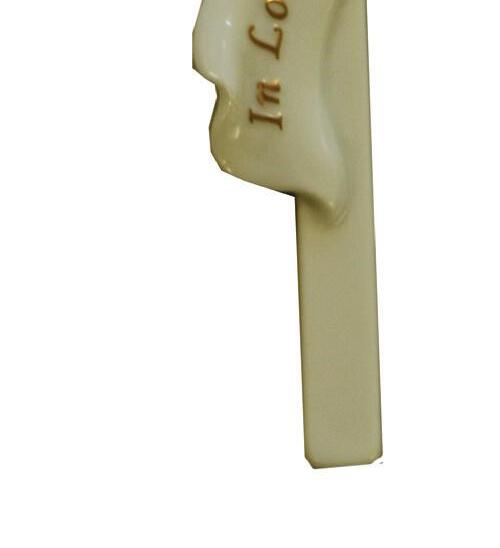





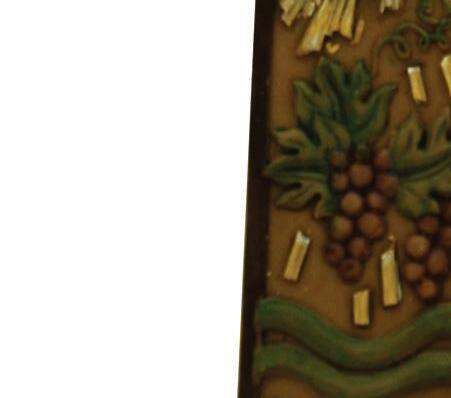








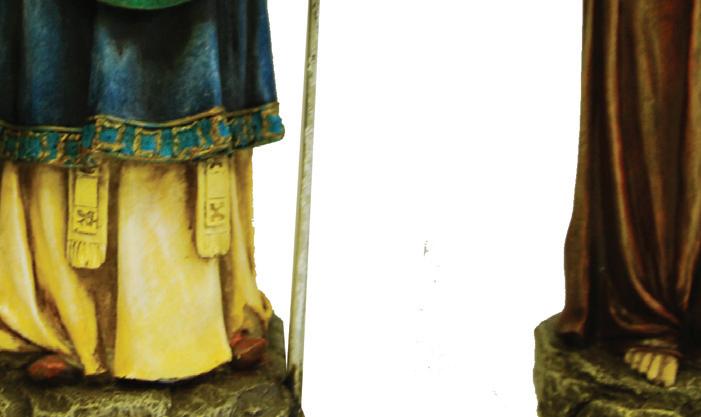

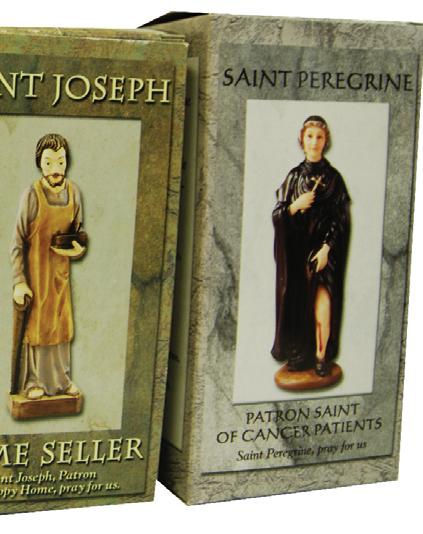


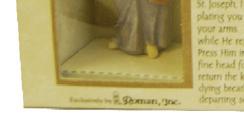
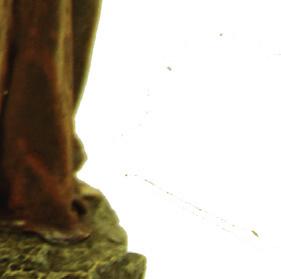



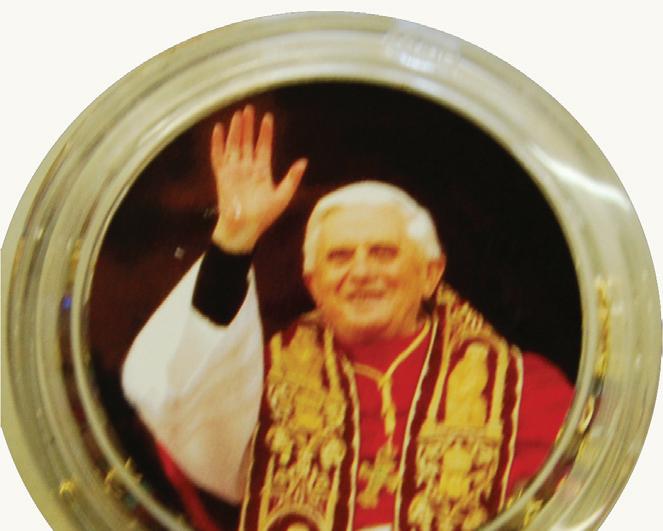



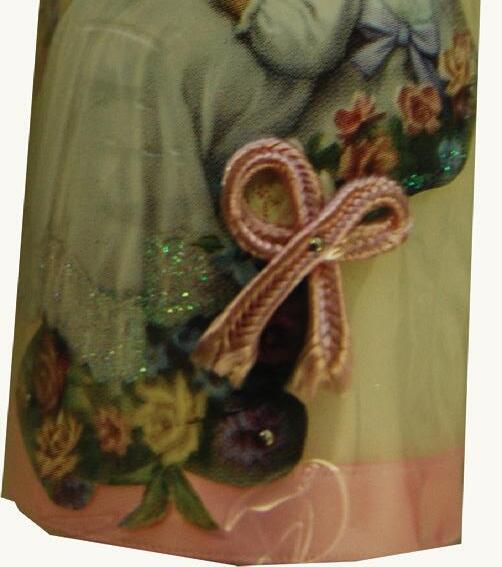

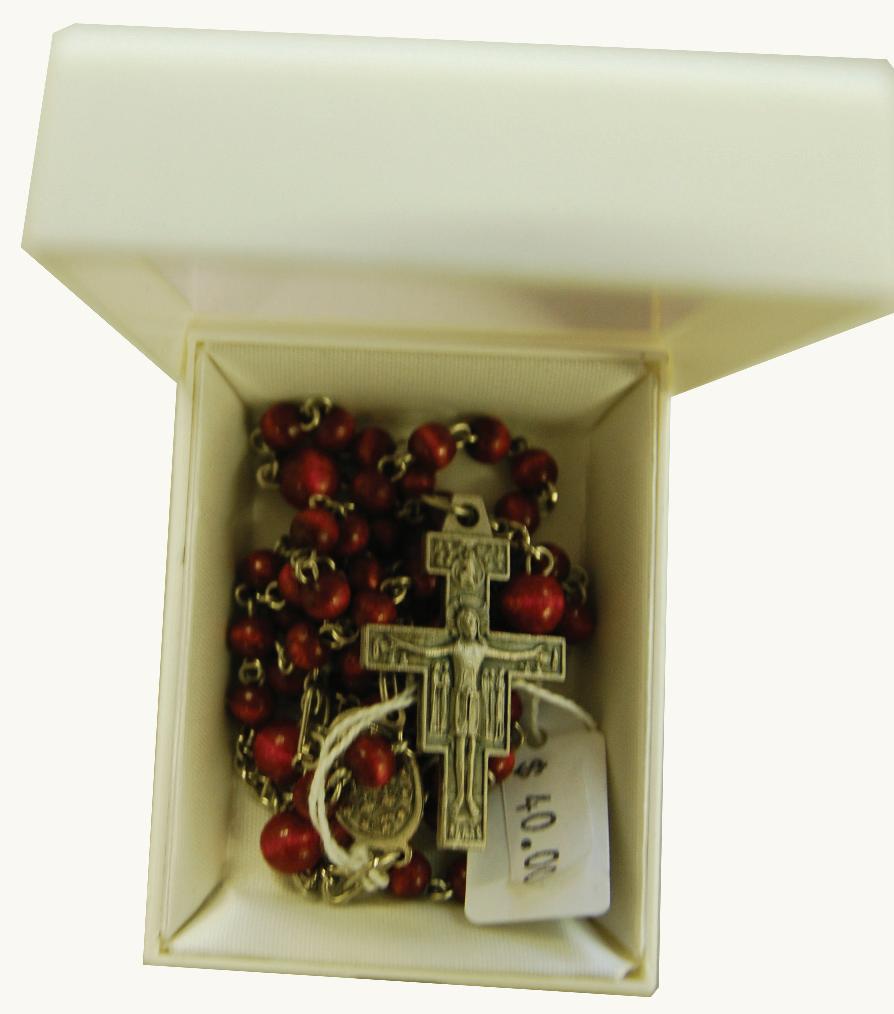






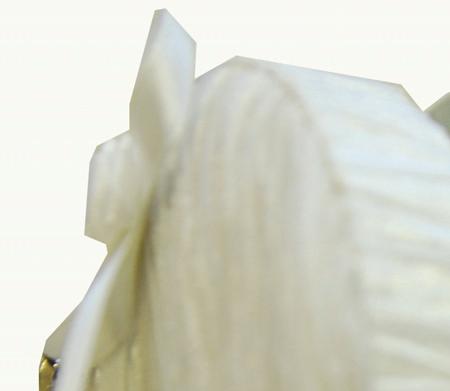








 Rosaries and Medals
Columban Calendar 2011
RRP $7.00 + P/H
Baby Girl Rosary and Cross $39.95 + P/H
Red Wood Rosary Beads $40.00 + P/H
Guardian Angel Hanging $19.95 + P/H
Pope Benedict XVI Rosary Beads $15.95 + P/H
Container (white) $7.95 + P/H
Rosary beads Handmade $40.00 + P/H
Candle Baptism Girl (15cm) $15.95 + P/H
Prayer Jar $11.95 + P/H
Pyx Metal & Leather Case $108.90 + P/H
‘Home is where the heart’s’ plaque $29.95 + P/H
‘I can do all things through Christ who strengthens me’ plaque $29.95 + P/H
St Joseph pocket Tocken $8.95 + P/H
Rosaries and Medals
Columban Calendar 2011
RRP $7.00 + P/H
Baby Girl Rosary and Cross $39.95 + P/H
Red Wood Rosary Beads $40.00 + P/H
Guardian Angel Hanging $19.95 + P/H
Pope Benedict XVI Rosary Beads $15.95 + P/H
Container (white) $7.95 + P/H
Rosary beads Handmade $40.00 + P/H
Candle Baptism Girl (15cm) $15.95 + P/H
Prayer Jar $11.95 + P/H
Pyx Metal & Leather Case $108.90 + P/H
‘Home is where the heart’s’ plaque $29.95 + P/H
‘I can do all things through Christ who strengthens me’ plaque $29.95 + P/H
St Joseph pocket Tocken $8.95 + P/H


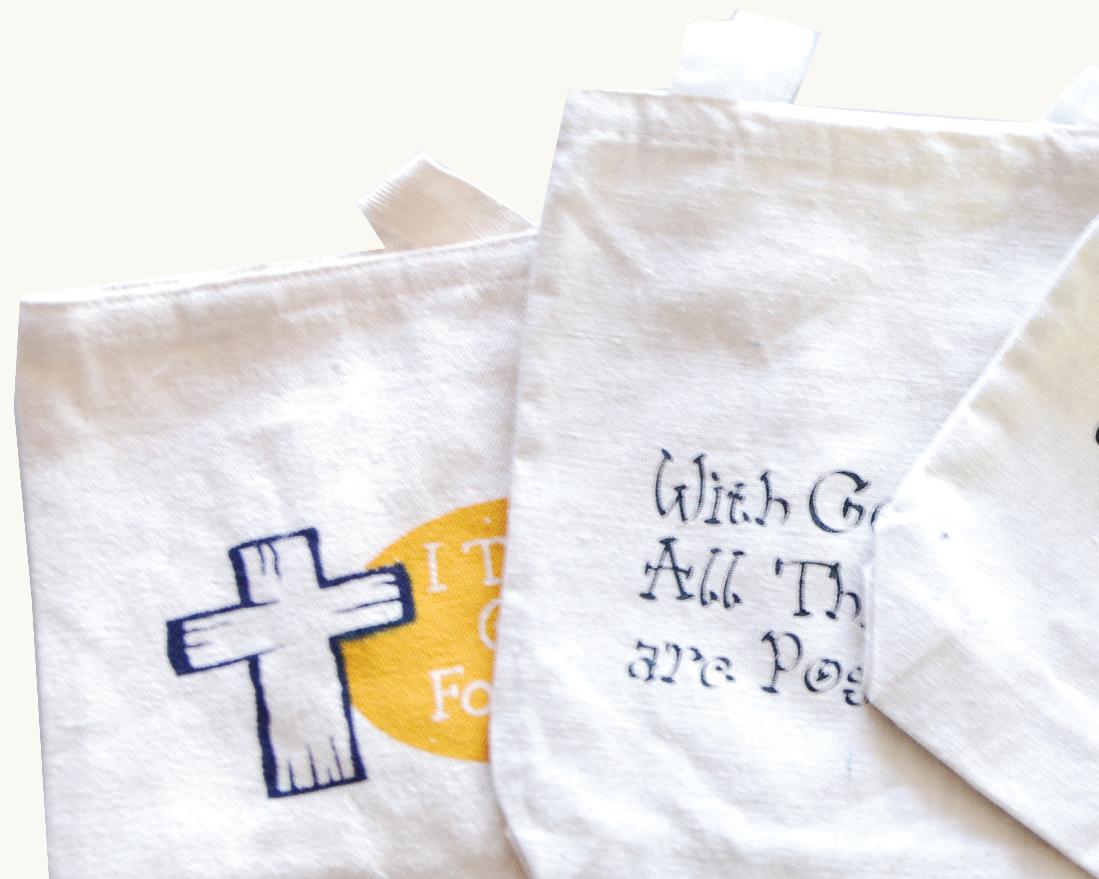




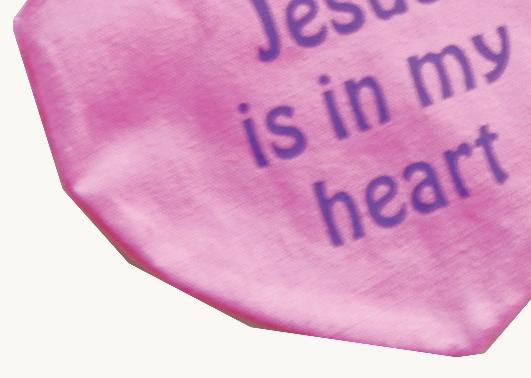












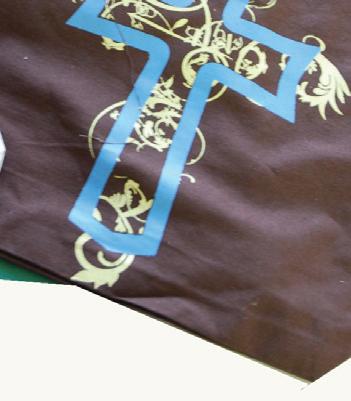










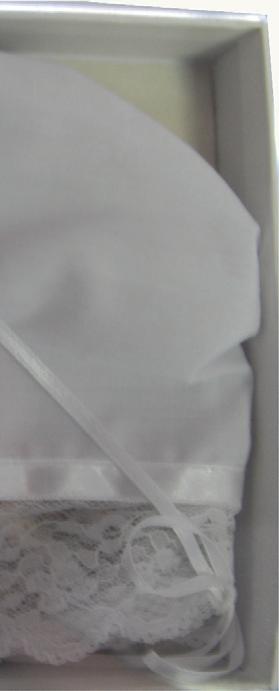
A large range of books, Rosaries, nativities, crucifixes, jewellery, artwork, giftware, statues and cards in store.
21 Victoria Square, Perth WA 6000
Fun Ideas for Christmas Baptism, First Communion and Confirmation ‘Jesus in my heart’ bears $6.95 + P/H Medium size carry Bags $5.95 + P/H Small ‘jesus in my heart’ bags $4.95 + P/H Large Caryy Bag $5.95 + P/H Holy Communion Crucifix $16.40 + P/H Confirmation photo frame $20.10 + P/H First Communion photo frame $20.10 + P/H Clear and Gold Crucifix $19.95 + P/H Christening Bonnet $33.45 + P/HI DON’T WANT TO GO TO CHURCH!
Turning the Struggle into a Celebration
By Br Mark Falkenhain, OSB, illustrated by RW Alley
It’s normal and natural for children to go through phases when they don’t want to go to Church. This book helps make the experience more meaningful, and even something to look forward to.
LEARNING TO BE A GOOD FRIEND
A Guidebook for Kids
By Christine A Adams, illustrated by RW Alley
This book shows children how to make friends, choose friends wisely and how to maintain these friendships. It illustrates the pitfalls of peer pressure, and what to do when you can’t find a friend or have lost your best friend.
MAD ISN’T BAD
A Child’s Book About Anger
By Michaelene Mundy, illustrated by RW Alley
It is OK to feel angry once in a while, but what should we do with our anger. Through understanding what anger feels like and what triggers it, we can learn healthy ways to handle it.
FORGIVING Is Smart for Your Heart
By Carol Ann Morrow, illustrated by RW Alley
This book teaches children that they have a choice: they can let hurt and anger hold their heart hostage, or they can let go and experience the freeing power of forgiveness.
GOD IS MY FRIEND
A Kid’s Guide to God
By Lisa O Engelhardt, illustrated by RW Alley
Through charming images and illustrations, this book helps young believers come to know God as an everyday, everywhere, anytime kind of Best Friend.
MY BODY IS SPECIAL
A Family Book About Sexual Abuse
By Cynthia Geisen, illustrated by RW Alley
This will help parents and carers to equip children with a clear sense of their personal boundaries as well as a plan of action in the event that a boundary is violated.
OTHER TITLES AVAILABLE:
ONE CARING KID
A Book About YOU – and What Your Kindness Can Do! PLAYING FAIR, HAVING FUN
A Kid’s Guide to Sports and Games


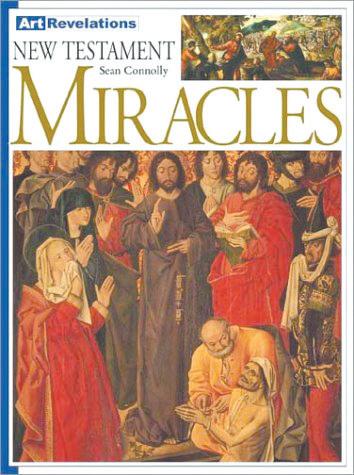
The following books are part of a popular series designed to teach and guide children in language they can understand. They provide thought-provoking insights into life’s journey, accompanied by colourful and meaningful illustrations.
SAYING GOODBYE, SAYING HELLO…
When Your family is Moving SHYNESS ISN’T A MINUS
How to Turn Bashfulness Into a Plus STANDING UP TO PEER PRESSURE
A Guide to Being True to You WHEN BAD THINGS HAPPEN
A Guide to Help Kids Cope RESPECT
Dare to Care, Share and Be Fair!
SAD ISN’T BAD
A Good Grief Guidebook for Kids Dealing with Loss PLAYING IT SAFE
A Kid’s Guide to Staying Healthy, Happy and Secure WHEN SOMEONE YOU LOVE HAS CANCER
A Guide to Help Kids Cope
A NEW BABY IS COMING!
A Guide for a Big brother or Sister BE THE STAR THAT YOU ARE
A Book for Kids Who Feel Different BYE – BYE BULLY!
A Kid’s Guide for Dealing With Bullies KNOW HOW TO SAY NO TO DRUGS AND ALCOHOL
A Kid’s Guide
GOD MADE US ONE BY ONE
How to See Prejudice and Celebrate Differences
KEEPING FAMILY FIRST
A Kid’s Guide
MAKING A BORING DAY BETTER
A Kid’s Guide to Battling the Blahs
LEARNING ABOUT VIRTUES
A Guide to Making Good Choices
HELP IS HERE FOR FACING FEAR!
KEEPING SCHOOL COOL!
A Kid’s Guide to Handling School Problems
MAKING CHRISTMAS COUNT!
A Kid’s Guide to Keeping the Season Sacred




Each book costs $14.95 + P/H
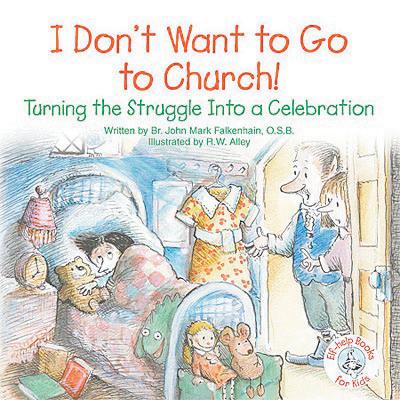





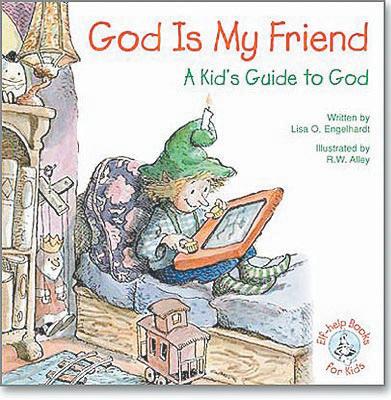







te y he he rd tof d g nt n se er o

 PHOTOS: COURTESY DUNCAN JEFFERSON
PHOTOS: COURTESY DUNCAN JEFFERSON
linger and ponder on the power of creation.
We followed the Avon through its valley in the rain: the path was slippery and some took falls, but no-one stayed down.
We looked out for each other and it was becoming obvious that though we were still ‘strangers’ to each other, human kindness and care for one another linked us together.
Those who were keen and speedy walkers would often drop back, just to be with the strugglers and stragglers: there were those who listened patiently to strangers’ stories, and there were those who lifted and cared for the fallen.
But those who fell and who were
rattled by their fall, inspired us all with their determination to continue and their cheerful spirit.
This is a journey of people who care: who struggle with their limitations but who are trying to make a difference, not only in their own lives, but in the lives of others too. They inspire me.
After the evening meal, people relaxed and unwound around the open fire: there was much laughter, but then “it” happened – the sharing of the impact of being a “pilgrim”.
For me this was the moment that I knew we were not just walking through the beautiful countryside, but were starting to experience life on a very special level.
App lets you sanctify the Hours with iBreviaryPro
iBreviaryPro
App was developed by Italian parish priest
This is yet another iPhone/ iPod Touch App that is making life easier for many technology savvy people around the globe. iBreviaryPro is exactly what the name states – a readymade, easy to use Breviary complete with Lauds, The Daily Office, Daytime Prayers, Vespers, Compline for both Roman and Ambrosian Rites.
The application was developed by a young Italian parish priest, Fr Paolo Padrini, who has since been appointed as an advisor to the Pontifical Commission for Social Communication, and has been involved with the creation of the social networking tool Pope2You, designed to initiate the Vatican into the world of the likes of facebook and myspace.
Upon launching the application, the phone will automatically download the day’s readings of the Office, all five hours of it, including antiphons, propers and hymns, all in your choice of six languages.
One can also select other days to download. The app also contains a number of ordinary prayers of the Catholic Tradition, an ‘About Saints Day’ (short bio
 with Tom Gourlay
with Tom Gourlay
and picture) along with a full lectionary for the day, as well as the entire Order of the Mass (including prayers and rubrics).
I know that for me, as well as for a number of others, this application has served as a wonderful introduction to this great prayer of the Church, the Liturgy of the Hours.
Whilst the four volume print editions will certainly not be made obsolete by this handy little app, it is likely to make this beautiful prayer more accessible to people everywhere, and it is particularly handy for people who are travelling. One drawback is its reliance on an internet connection (either Wifi or your own mobile internet connection to work). This is somewhat circumvented by the new feature which allows users to download up to ten days of prayers in advance.
Other similar apps, such as one named Universalis, operate on a different platform, allowing you to download the entirety of the office once and for all – for every day - EVER. You pay for that

convenience, however: a one off payment of $29.95 (which is still cheaper than the printed publications).
As iBreviaryPro is a free app, it will likely serve to propagate this tremendous prayer of the Church further among the laity, particularly young people.
Available for iPhone, iPad, iPod Touch, Android, mobile version, widgets, this is a download that is definitely recommended. Ave Maria!

Wireless Faith: Screenshots from iBreviaryPro give an idea of this apps features. Users can download the Office in advance for particular dates.
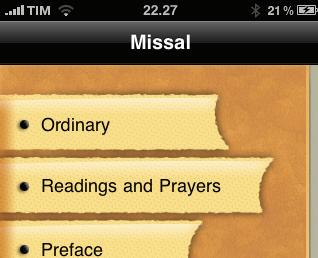
For once, intriguingly, new technology looks back to tradition
It has been just over three years since the Pope issued his 2007 Motu Proprio, Summorum Pontificum, on the celebration of the Roman Rite according to the 1962 Missal, the Tridentine Mass, now more correctly referred to as Mass in the Extraordinary Form (EF).
This document, which has given unprecedented freedom for priests to celebrate the sacred liturgy of the Mass according to this form, is also likely to have great ramifications on liturgy and liturgical formation in the future.
And so, with interest in this ancient form of the Mass steadily growing, particularly among young people, this handy little application, together with its corresponding web site, does much to promote the ‘fully conscious and active participation’ of the lay faithful in the liturgy as envisioned by the Second Vatican Council (Sacrosanctum Concillium #14).
A relatively simple app, iMass contains the Latin text of the 1962 Missal, complete with rubrics

and the daily readings as well as the corresponding English translations. The other feature of this app is the ability to watch a
recording of the daily Mass being said in the EF by a priest of the Fraternal Society of Saint Peter (FSSP). This is updated daily and is a great way to experience the Mass when you are unable to attend.
Obviously, viewing Mass on your phone or over the internet does not count for your Sunday obligation, but it serves as a great way to unite yourself to the holy sacrifice of the Mass anywhere, any time and the homilies are a wonderful source of formation and encouragement in the spiritual life.
With resources like this being made available, along with the liturgical influence of Pope Benedict XVI, it is likely that awareness and appreciation of the ancient and beautiful liturgy of the Church will continue to grow in local parish communities around the world.
This app comes with a miniscule price tag of $2.49, which is a worthwhile investment for those wishing to learn about and participate fully in the EF Mass. Ave Maria!
Pope Benedict XVI welcomed French President Nicolas Sarkozy to the Vatican, and a top Vatican official prayed with the president in St Peter’s Basilica. Sarkozy’s visit to the Vatican on 8 October came at a time when the French leader’s popularity is falling and in the wake of harsh criticism from some Church leaders over his government’s proposals to deport some Gypsies. The Pope and president spent more than 30 minutes alone together before Sarkozy went on to a meeting with Cardinal Tarcisio Bertone, Vatican secretary of state, and Archbishop Dominique Mamberti, the Vatican’s foreign secretary. A Vatican press release said the president’s discussions with the Pope and with the Vatican’s foreign affairs experts focused on “themes of international politics, such as the Middle East peace process,” but also on the importance of dealing with the ethical dimension of the economy in the continuing attempt to address the global financial crisis. After his meetings, Sarkozy went into St Peter’s Basilica where he waved to a few pilgrims on his way to pray briefly in the Blessed Sacrament Chapel and at the main altar of the basilica. Sarkozy then joined French Cardinal Jean-Louis Tauran, president of the Pontifical Council for Interreligious Dialogue, at the altar of St Petronilla, a martyr to whom the French have a special devotion. During a prayer service, which included Scripture readings, Cardinal Tauran prayed that the French people and their leaders would have the courage and perseverance to work for “the absolute respect of human life,” for justice, employment, education and the safeguarding of the environment.
In a ceremony rich with symbolism, Cardinal Tarcisio Bertone ordained two new Bishops and two Archbishops, including US Redemptorist Father Joseph W Tobin. “The fundamental mission of a Bishop is proclaiming the good news,” said Cardinal Bertone, the Vatican secretary of state, who presided over the ordination Mass on 9 October in St Peter’s Basilica. Archbishop Tobin’s ordination came after Pope Benedict XVI appointed him secretary of the Congregation for Institutes of Consecrated Life and Societies of Apostolic Life. The Cardinal also ordained three other recent papal appointees: Archbishop Giorgio Lingua, the new Apostolic Nuncio to Iraq and Jordan; Bishop Ignacio Carrasco de Paula, head of the Pontifical Academy for Life; and Bishop Enrico dal Covolo, rector of the Pontifical Lateran University. The new Bishops and their families met with Pope Benedict on 11 October in a private audience at the Vatican. In his homily on 9 October, Cardinal Bertone said that Archbishop Tobin, 58, will have “the delicate task of collaborating with the Roman Curia” as secretary of the Vatican office that oversees the world’s Religious Orders.
This year marks Sister Habiba Touma’s golden anniversary as a Dominican Sister of St Catherine of Siena, but there will be no grand celebration any time soon. Sr Habiba was returning to her native Iraq to take a leadership post with her mother house which accepts women from all Catholic rites. Given the political instability and Muslim-led insurgency in northern Iraq, she said it was best to keep a low profile. But before leaving, she spent part of her last morning at the Mother of Mercy Clinic in Zakar giving Catholic journalists a tour of the clinic’s activities, plying them with sweets and strong coffee afterward. Sr Habiba is one of those people who truly does not look her age. When she shared that she was celebrating her 50th anniversary in Religious life, one reporter jokingly suggested that she must have entered the convent at the age of ... 9? Her face already heavily wrinkled, Sr Habiba furrowed her brow further, did some silent counting, and said the guess was wrong. “I was 10 when I joined,” she said. She’d rather deflect the attention being paid to her to focus on the plight of her patients. “These people know nothing else” than the refugee camps established after the 1948 war that established Israeli control over the Palestinian territories, confining hundreds of thousands of Palestinians to refugee camps. “The (Jordanian) government is pushing to give them ingress, to give them health,” Sr Habiba said, “but the elders don’t want infrastructure.”
Officials at a Colorado Springs public school sent a message to students and their parents telling them the school was banning rosaries from being worn as an accessory on top of students’ clothing. “Students, we need to remind everyone that here at Mann, we respect all Religious beliefs. Some members of the Catholic faith are offended by Rosaries being worn around the neck like fashion accessories,” said the 7 October memo to students at Mann Middle School that also was sent to their parents. Principal Scott Stanec forwarded the memo to The Colorado Catholic Herald, the newspaper of the Colorado Springs Diocese. “If you wish to wear a Rosary around your neck, it must, out of respect for others, be worn underneath your shirt,” the memo said. It also stated that students who did not follow the directive would be issued a dress-code violation. In an interview for a 5 October blog post on the web site of The Gazette, a Colorado Springs daily newspaper, Mgr Bob Jaeger, diocesan vicar general, said the diocese did not oppose the decision since “the Rosary was made to be an article of faith, an instrument of prayer. It is not jewellery.” Mgr Jaeger also affirmed Colorado Springs School District 11’s right to dictate the school’s dress codes. Mgr Ricardo Coronado-Arrascue, diocesan judicial vicar and chancellor, echoed Mgr Jaeger’s sentiments about the wearing of devotionals. “None of (them) are meant to be jewellery. It’s a reminder of your faith,” he told The Herald. “It should also be a way to identify with your faith.”
CNS
WASHINGTON - When parents receive a prenatal diagnosis that their unborn child has a disability or a potentially lethal illness, they need the support of the Church and the community more than ever, said a panel of medical and pastoral experts and several parents who have experienced that sad scenario.
“Parents feel harassed and judged if they even consider bringing into the world a child” with a prenatal diagnosis of a disability or a lethal or even nonlethal condition, said Dr John Bruchalski, an obstetrician-gynaecologist at the Tepeyac Family Care Centre in Fairfax, Virginia.
The pressure to abort such a child is strong and often couched in euphemisms such as “early induction” and “merciful choice,” Bruchalski said. As a result, up to 90 per cent of children diagnosed with Down syndrome are aborted. But he said screening tests for Down syndrome deliver “false positives” 7 to 10 percent of the time.
The diagnosis of an illness or disability often comes unexpectedly after an ultrasound, on a day when parents “hope to come home with a cute ultrasound picture for the refrigerator,” said Monica Rafie of Chicago.
Rafie had what she calls her own “D-Day” in 2001, when a doctor told her the child she was carrying was “incompatible with life.”
“The defining moment of your pregnancy is no longer the deliv-
ery date, but the diagnosis date,” Rafie said. “And from that day on, the pregnancy does begin to feel more like a battle than something wonderful.”
Rafie and her husband resisted pressures to abort their child diagnosed with complex heart problems. Although she required several surgeries in the first months of her life, their daughter Celine is now 8 and in the third grade.
In 2002, Rafie and other parents and professionals founded BeNotAfraid.net, a resource designed to offer hope and information to others facing a poor prenatal diagnosis.
Although the outreach is guided by Catholic principles on decisions related to life and death, it is available to anyone who needs support.
Capuchin Father Dan Mindling, a theologian and academic dean at Mount St Mary’s Seminary in Emmitsburg, Md, said it is important for everyone affected by a situation involving a poor prenatal diagnosis to remember that “the child is alive now, the parents have a relationship with the child now.”
“Their very seriously ill child is both their child and a child of God right now,” he added. “Every moment should become precious.”
Nancy Mayer-Whittington, who lives in the Archdiocese of Washington, said she learned from her daughter Angela that “life can be lived fully and completely in nine months and 10 minutes.”
Angela was diagnosed in utero with trisomy 18, a genetic defect that is usually fatal. She died 10 minutes after her birth in 1994.
“I was scared that I would never be the same, that I would never recover,” said Mayer-Whittington of her decision to continue the pregnancy after the diagnosis. And that turned out to be true, because Angela “opened my life in ways I had never imagined,” she said.
Mayer-Whittington and Cubby LaHood, whose son Francis
died shortly after birth, founded Isaiah’s Promise nearly two decades ago to help women continue their pregnancies after receiving a poor prenatal diagnosis.
“We hold their hands as they walk the path of a pregnancy that is not as they envisioned,” MayerWhittington said.
Tracy Winsor, a North Carolina perinatal loss peer counsellor, co-founded the BeNotAfraid Ministry of Charlotte in 2008 with Sandy Buck, whose son Casey was diagnosed with trisomy 18 during her pregnancy. Winsor said the free services - primarily offered by volunteers - are “a ministry of presence” that can help parents “move past the diagnosis.”
She recalled the comments of a Charlotte nurse who witnessed the help given to one mother. “I didn’t realise you were a regular service,” she said. “I just thought those parents had the best friends in the world.”
The panel discussion with Bruchalski, Fr Mindling, Winsor and Rafie was part of an Internet seminar organised by the National Catholic Partnership on Disability. Held before an audience at The Catholic University of America in Washington, the seminar also had online participants in 258 sites around the country.
The seminar was followed at Catholic University by another panel discussion with LaHood and her husband, Dan; MayerWhittington; Theresa Bonopartis, whose New York-based organisation, Lumina: Hope and Healing After Abortion, offers retreats for women or couples who regret an abortion following a prenatal diagnosis; and Mgr Charles E Pope, pastor of Holy ComforterSt Cyprian Parish in Washington.
The second discussion was designed to move forward local plans for a Catholic pastoral response to unexpected prenatal diagnosis.
Melinda Tankard Reist’s book Defiant Birth: women who resist medical eugenics, is available from The Record Bookshop
WASHINGTON (CNS)Catholic and Orthodox Church representatives have offered their vision of what the unity of both Churches might look like in two statements approved during a recent meeting at Georgetown University.
Developed by the 24 members of the North American Orthodox-Catholic Theological Consultation during a three day meeting in Washington that ended on 2 October, the statements acknowledge common beliefs and history.
Released on 7 October, the statements also identified areas where the Churches diverge in leadership and other practices that must be reconciled before the nearly 1,000 year separation between the Churches can end.
One statement addresses issues of disagreement such as the role of the Pope and how leadership on behalf of the Church by the Bishop of Rome can be carried out.
The second statement discusses the importance of developing a specific set of criteria for determining the date of Easter so that both Churches can proclaim the resurrection of Christ to the
world with a unified voice. Paulist Father Ronald Roberson, associate director of the US Conference of Catholic Bishops’ Secretariat for Ecumenical and Interreligious Affairs and a consultation member, called the statements “unprecedented.”
He said no other such consultative bodies have offered suggestions on what unity will entail or how it might look in the future.
“The whole point is we’re at a point in our dialogue that we can start to talk ... about what we dimly perceive what a united Church would look like,” Fr Roberson told Catholic News Service on 8 October.
“Obviously for that to happen, Catholics would have to adjust and Orthodox would have to adjust.”
The first statement, Steps Toward a Reunited Church: A Sketch of an Orthodox-Catholic Vision for the Future, offers a vision of the shape of a reunited Catholic and Orthodox Church resulting from the re-establishment of full communion.
The second statement, Celebrating Easter/Pascha Together, focuses on the importance of a unified celebration of Christ’s resurrection by using the most accurate scientific
instruments and astronomical data available to determine the date of Easter. Fr Roberson said Orthodox and Catholics understand that major disagreements still must be overcome but that the statements acknowledge “that we have so much in common.”
The role of the papacy in the worldwide Catholic communion is “the root obstacle” to unity, the first statement acknowledged. It reviewed how the Catholic Church believes in the primacy of the Pope and his teaching authority and how the Orthodox Church has a different understanding of the Church as described in New Testament passages.
“Clearly, (unity) cannot be achieved without new, better harmonised structures of leadership on both sides: new conceptions of both synodality and primacy in the universal Church, new approaches to the way primacy and authority are exercised in both our communions,” the statement said.
Despite the disagreement on the role of the papacy, the Catholic and Orthodox Churches share much that “significantly overshadows our differences,” the document said.
It cited the liturgy and the shared Sacraments, particularly
Sacred music cannot be limited to Gregorian chant, but it is chant that contains the key to renew liturgical song, according to a consultor for the Office of Liturgical Celebrations of the Supreme Pontiff.
Father Uwe Michael Lang, also an official of the Congregation for Divine Worship and the Sacraments, made his observation during a recent lecture at l’Accademia Urbana delle Arti in Rome.
Fr Lang pointed to the 1749 encyclical Annus Qui by Pope Benedict XIV as the “most important papal pronouncement on sacred music” prior to Pope St Pius X’s Tra Le Sollecitudini
The 18th century encyclical “proposes the important criteria of sacred music that are valid beyond the limits of their historical con-
text and resound also in our time,” the priest said.
Fr Lang explained that the encyclical presents plainsong as normative for the Roman liturgy “while it approves unaccompanied polyphony and also permits orchestral music, though with certain conditions, in divine worship.”
He said this position of the Church is reflected in the constitution of sacred liturgy from the Second Vatican Council, which “exalts Gregorian chant as the ‘proper’ music of the Roman liturgy.”
“The pre-eminence of chant,” Fr Lang further recalled, “was confirmed by Benedict XVI in his 2007 post-synodal apostolic exhortation Sacramentum Caritatis.”
Fr Lang proposed that the value of Gregorian chant is “its profound relationship with the liturgical text, to which it gives musical form.”
“Annus Qui requests explicitly the integrity and intelligibility of the texts that are sung in the Mass and in the Divine Office,” the priest affirmed.
“This concern was already debated in Trent, but not included in the council’s official documents.”
He added that though “sacred music cannot be limited exclusively to Gregorian chant, it has in itself, however, the keys for a true renewal of sacred music.”
ZENIT.ORG
Sign of the times? A group of cloistered nuns from Abbaye de Notre-Dame de l’Annonciation (Abbey of Our Lady of the Annunciation), a Benedictine convent in a remote region of France near Avignon, have recorded a CD titled VoicesChant From Avignon, which is to be released in November.
PHOTO: CNS/COURTESY DECCA LABEL GROUP
In impromptu talk, Benedict cites threat ofBY JOHN T HAVIS
VATICAN CITY (CNS) - Before the speech-giving began at the Synod of Bishops for the Middle East, Pope Benedict XVI offered participants an unusual reflection on the threat of “false gods” that beset the modern world.
After leading prayers in the synod hall the morning of 11 October, the pope spoke off-thecuff for about 20 minutes about the meaning of the psalms that were chanted by the 185 synod fathers.
He traced humanity’s historical move away from polytheism and focused on the meaning of Christ’s entry into human history.
But he said the modern world is still threatened by an array of destructive powers based on “false divinities that must be unmasked.”
These include the ideology of terrorism that purports to act in the name of God, drug abuse that devours human lives like a beast,
as well as a widespread view of marriage that no longer values the virtue of chastity, he said.
They also include the “anonymous” economic interests that, instead of belonging to man, enslave and even massacre people, he said.
He said the battle against such forces is part of a constant struggle for the church and for the faith. The Book of Revelation, he said, sheds light on this struggle against false gods, particularly in its image of the serpent who creates a river to drown a woman in flight, and of the earth that swallows up the river.
“I think the river is easily interpreted as these currents that dominate everyone and that want to make the church and the faith disappear,” he said.
“And the earth that absorbs these currents is the faith of ordinary people, which doesn’t allow itself to be overcome by this river.”
“The faith of ordinary people
is the true wisdom,” he said. The pope added that the climate change being experienced by humanity today is another type of threat, one evoked in the language of Psalm 82, which speaks of a time when “all the foundations of the earth are shaken.”
“And today we see that with the climate problems, the foundations of the earth are threatened, threatened by our behavior,” he said.
“These exterior foundations are shaken because the interior foundations are shaken -- the interior foundations of morality and religious values, of the right way of living according to the faith,” he said.

Baptism, the anointing with chrism and reception of the Eucharist.
The document offered suggestions to Orthodox and Catholic leaders around the world upon which to build a “worldwide ecclesial communion” including:
- Mutual recognition that both Churches are “authentic embodiments of the one Church of Christ, founded by the apostles.”
- Acceptance of each Church’s diversity without the need to forego their own traditions and practices.
- Reception of the Sacraments by all members in both Churches.
- Continuing each Church’s practices in the selection or election of Bishops; those chosen would notify appropriate parties of their new Church standing.
The document also offered a series of what it described as preparatory steps that Church leaders could take that would lead to unity. They included meetings between Orthodox and Catholic Bishops in a nation or region to discuss pastoral issues; special liturgies, common prayer services and joint social ministries; and having the Pope and Orthodox primates invite the faithful under their jurisdictions to “recognise each other’s Churches as ‘sister Churches.’” ■
BY JOHN T HAVISVATICAN CITY (CNS) - Pope
Benedict XVI opened the Synod of Bishops for the Middle East with a strong call to support the minority Christian population in the region, and said peace and protection of human rights were essential conditions for the Church’s survival there.
Celebrating Mass in St Peter’s Basilica on 10 October with more than 250 Synod participants, the Pope said the Middle East has a unique place in salvation history as the “cradle” of the Church’s worldwide evangelising mission.
The Synod’s primary goal, he said, was to renew the pastoral energy of Middle Eastern Church communities and strengthen their faith identity so that they can continue to witness the Gospel to all peoples. That task, he added, goes hand in hand with the Church’s dialogue with Muslims and Jews.
The Mass featured liturgical elements from many of the Catholic rites of the Middle East as well as prayers in Latin. It began with a long procession of 177 Synod fathers, many of whom wore the distinctive vestments and headgear of their Eastern rites.
Prayers of the faithful were recited in English, Arabic, Turkish,
Hebrew and Farsi, invoking the need for peace, the promotion of tolerance and the Christian duty to evangelise through example. The Eucharistic liturgy featured a hymn in Arabic and Syriac, sung by an inter-ritual choir of Eastern pontifical colleges in Rome.
The Pope was joined at the altar by several chief concelebrants, including two honorary president delegates of the Synod: the Lebanon-based Maronite patriarch, Cardinal Nasrallah P Sfeir, and the Chaldean patriarch, Cardinal Emmanuel-Karim Delly of Baghdad.
In his opening remarks, Pope Benedict said the Mass would help them all spiritually prepare for “these days of intense work.” The 83 year old Pope was to preside over most of the twice daily sessions of the Synod assembly, which was to conclude on 24 October.
In his homily, the Pope emphasised the Synod’s theme of unity in a land where the Church has a rich variety of liturgical, spiritual, cultural and disciplinary traditions. Without Church unity, there can be no real witnessing of the faith, he said.
The Pope encouraged the Middle East Church leaders to rise above their present difficulties with the same spirit of Pentecost that moved
the early church.
“The first Christians in Jerusalem were few. No one could have imagined what happened afterward. And the Church still lives with that same energy that made the early Church arise and grow,” he said.
The Synod’s role, he said, was to renew that sense of “permanent dynamism” among Catholic communities of the Middle East. In that sense, he said, the Synod was primarily pastoral, although it could not ignore the often dramatic social and political situations in which Christians live.
The Pope said that in order to effectively witness their faith, the Church’s members need to strengthen their Christian identity through the word of God and the Sacraments. Such witness is also a fundamental human right, and requires conditions of peace and justice - a responsibility that implicates the international community as well as the majority of religions of the region, he said.
The Pope said the Synod would promote ecumenism as well as interfaith dialogue. Jewish and Muslim representatives were scheduled to address the Synod, and leaders of other Christian Churches were also invited.
“This event is favourable for continuing constructive dialogue
with Jews, with whom we are tied in a permanent way by the long history of the covenant, as well as with Muslims,” he said.
The Pope pledged that the Catholic communities in the region would continue to contribute much to their societies, not only in works of social promotion like schools and hospitals, but also by practising the Gospel values of forgiveness and reconciliation.
In keeping up this social presence, he added, the Christians of the Middle East must rely on support from Catholic communities around the world, many of which also sent representatives to the Synod.
After the Mass, addressing pilgrims who packed St Peter’s Square below his apartment window, the Pope asked for prayers for the success of the Synod. He said the Church in the Middle East has been afflicted by the “deep divisions and age-old conflicts” of the region, but today is called to be an instrument of reconciliation, on the model of the first Christian community of Jerusalem.
Noting that October is the month of the Rosary, which he called a “biblical prayer,” the Pope entrusted the Synod to Mary’s intercession.
Sacred music cannot be limited to Gregorian chant, but it is chant that contains the key to renew liturgical song, according to a consultor for the Office of Liturgical Celebrations of the Supreme Pontiff.
Father Uwe Michael Lang, also an official of the Congregation for Divine Worship and the Sacraments, made his observation during a recent lecture at l’Accademia Urbana delle Arti in Rome.
Fr Lang pointed to the 1749 encyclical Annus Qui by Pope Benedict XIV as the “most important papal pronouncement on sacred music” prior to Pope St Pius X’s Tra Le Sollecitudini
The 18th century encyclical “proposes the important criteria of sacred music that are valid beyond the limits of their historical con-
text and resound also in our time,” the priest said.
Fr Lang explained that the encyclical presents plainsong as normative for the Roman liturgy “while it approves unaccompanied polyphony and also permits orchestral music, though with certain conditions, in divine worship.”
He said this position of the Church is reflected in the constitution of sacred liturgy from the Second Vatican Council, which “exalts Gregorian chant as the ‘proper’ music of the Roman liturgy.”
“The pre-eminence of chant,” Fr Lang further recalled, “was confirmed by Benedict XVI in his 2007 post-synodal apostolic exhortation Sacramentum Caritatis.”
Fr Lang proposed that the value of Gregorian chant is “its profound relationship with the liturgical text, to which it gives musical form.”
“Annus Qui requests explicitly the integrity and intelligibility of the texts that are sung in the Mass and in the Divine Office,” the priest affirmed.
“This concern was already debated in Trent, but not included in the council’s official documents.”
He added that though “sacred music cannot be limited exclusively to Gregorian chant, it has in itself, however, the keys for a true renewal of sacred music.”
ZENIT.ORG
Sign of the times? A group of cloistered nuns from Abbaye de Notre-Dame de l’Annonciation (Abbey of Our Lady of the Annunciation), a Benedictine convent in a remote region of France near Avignon, have recorded a CD titled VoicesChant From Avignon, which is to be released in November.
PHOTO: CNS/COURTESY DECCA LABEL GROUP
In impromptu talk, Benedict cites threat ofBY JOHN T HAVIS
VATICAN CITY (CNS) - Before the speech-giving began at the Synod of Bishops for the Middle East, Pope Benedict XVI offered participants an unusual reflection on the threat of “false gods” that beset the modern world.
After leading prayers in the synod hall the morning of 11 October, the pope spoke off-thecuff for about 20 minutes about the meaning of the psalms that were chanted by the 185 synod fathers.
He traced humanity’s historical move away from polytheism and focused on the meaning of Christ’s entry into human history.
But he said the modern world is still threatened by an array of destructive powers based on “false divinities that must be unmasked.”
These include the ideology of terrorism that purports to act in the name of God, drug abuse that devours human lives like a beast,
as well as a widespread view of marriage that no longer values the virtue of chastity, he said.
They also include the “anonymous” economic interests that, instead of belonging to man, enslave and even massacre people, he said.
He said the battle against such forces is part of a constant struggle for the church and for the faith. The Book of Revelation, he said, sheds light on this struggle against false gods, particularly in its image of the serpent who creates a river to drown a woman in flight, and of the earth that swallows up the river.
“I think the river is easily interpreted as these currents that dominate everyone and that want to make the church and the faith disappear,” he said.
“And the earth that absorbs these currents is the faith of ordinary people, which doesn’t allow itself to be overcome by this river.”
“The faith of ordinary people
is the true wisdom,” he said. The pope added that the climate change being experienced by humanity today is another type of threat, one evoked in the language of Psalm 82, which speaks of a time when “all the foundations of the earth are shaken.”
“And today we see that with the climate problems, the foundations of the earth are threatened, threatened by our behavior,” he said.
“These exterior foundations are shaken because the interior foundations are shaken -- the interior foundations of morality and religious values, of the right way of living according to the faith,” he said.

Baptism, the anointing with chrism and reception of the Eucharist.
The document offered suggestions to Orthodox and Catholic leaders around the world upon which to build a “worldwide ecclesial communion” including:
- Mutual recognition that both Churches are “authentic embodiments of the one Church of Christ, founded by the apostles.”
- Acceptance of each Church’s diversity without the need to forego their own traditions and practices.
- Reception of the Sacraments by all members in both Churches.
- Continuing each Church’s practices in the selection or election of Bishops; those chosen would notify appropriate parties of their new Church standing.
The document also offered a series of what it described as preparatory steps that Church leaders could take that would lead to unity. They included meetings between Orthodox and Catholic Bishops in a nation or region to discuss pastoral issues; special liturgies, common prayer services and joint social ministries; and having the Pope and Orthodox primates invite the faithful under their jurisdictions to “recognise each other’s Churches as ‘sister Churches.’” ■
BY JOHN T HAVISVATICAN CITY (CNS) - Pope
Benedict XVI opened the Synod of Bishops for the Middle East with a strong call to support the minority Christian population in the region, and said peace and protection of human rights were essential conditions for the Church’s survival there.
Celebrating Mass in St Peter’s Basilica on 10 October with more than 250 Synod participants, the Pope said the Middle East has a unique place in salvation history as the “cradle” of the Church’s worldwide evangelising mission.
The Synod’s primary goal, he said, was to renew the pastoral energy of Middle Eastern Church communities and strengthen their faith identity so that they can continue to witness the Gospel to all peoples. That task, he added, goes hand in hand with the Church’s dialogue with Muslims and Jews.
The Mass featured liturgical elements from many of the Catholic rites of the Middle East as well as prayers in Latin. It began with a long procession of 177 Synod fathers, many of whom wore the distinctive vestments and headgear of their Eastern rites.
Prayers of the faithful were recited in English, Arabic, Turkish,
Hebrew and Farsi, invoking the need for peace, the promotion of tolerance and the Christian duty to evangelise through example. The Eucharistic liturgy featured a hymn in Arabic and Syriac, sung by an inter-ritual choir of Eastern pontifical colleges in Rome.
The Pope was joined at the altar by several chief concelebrants, including two honorary president delegates of the Synod: the Lebanon-based Maronite patriarch, Cardinal Nasrallah P Sfeir, and the Chaldean patriarch, Cardinal Emmanuel-Karim Delly of Baghdad.
In his opening remarks, Pope Benedict said the Mass would help them all spiritually prepare for “these days of intense work.” The 83 year old Pope was to preside over most of the twice daily sessions of the Synod assembly, which was to conclude on 24 October.
In his homily, the Pope emphasised the Synod’s theme of unity in a land where the Church has a rich variety of liturgical, spiritual, cultural and disciplinary traditions. Without Church unity, there can be no real witnessing of the faith, he said.
The Pope encouraged the Middle East Church leaders to rise above their present difficulties with the same spirit of Pentecost that moved
the early church.
“The first Christians in Jerusalem were few. No one could have imagined what happened afterward. And the Church still lives with that same energy that made the early Church arise and grow,” he said.
The Synod’s role, he said, was to renew that sense of “permanent dynamism” among Catholic communities of the Middle East. In that sense, he said, the Synod was primarily pastoral, although it could not ignore the often dramatic social and political situations in which Christians live.
The Pope said that in order to effectively witness their faith, the Church’s members need to strengthen their Christian identity through the word of God and the Sacraments. Such witness is also a fundamental human right, and requires conditions of peace and justice - a responsibility that implicates the international community as well as the majority of religions of the region, he said.
The Pope said the Synod would promote ecumenism as well as interfaith dialogue. Jewish and Muslim representatives were scheduled to address the Synod, and leaders of other Christian Churches were also invited.
“This event is favourable for continuing constructive dialogue
with Jews, with whom we are tied in a permanent way by the long history of the covenant, as well as with Muslims,” he said.
The Pope pledged that the Catholic communities in the region would continue to contribute much to their societies, not only in works of social promotion like schools and hospitals, but also by practising the Gospel values of forgiveness and reconciliation.
In keeping up this social presence, he added, the Christians of the Middle East must rely on support from Catholic communities around the world, many of which also sent representatives to the Synod.
After the Mass, addressing pilgrims who packed St Peter’s Square below his apartment window, the Pope asked for prayers for the success of the Synod. He said the Church in the Middle East has been afflicted by the “deep divisions and age-old conflicts” of the region, but today is called to be an instrument of reconciliation, on the model of the first Christian community of Jerusalem.
Noting that October is the month of the Rosary, which he called a “biblical prayer,” the Pope entrusted the Synod to Mary’s intercession.
UNITED NATIONS (CNS)
- The United Nations must fulfill its responsibilities to address extreme poverty, said the Vatican’s new representative to the United Nations.
Archbishop Francis Chullikatt said on 5 October that although the global financial and economic crisis has shown signs of recovery, “many of the poorest within society remain outside the benefits of this recovery with an additional 64 million people falling into extreme poverty by the end of this year.
“This challenge presents a need for new focus by the international community to return to authentic humanitarian programmes and financial systems which place the person at its centre rather than at its service,” he said.
The Archbishop, named to the post in July, delivered the statement to a session of the General Assembly that was addressing a report on the work of the world body.
Focusing on military expenses around the world, he called the US$1.3 trillion spent in 2007 for arms and other military expenditures particularly troubling in light of the fact that more than 1.4 billion people around the world live on less than US$1.25 per day.
“This never-ending ability to find funds for military programmes highlights yet again the need for individuals and governmental leaders to refocus their priorities and financial commitments,” he said.
He noted that issues facing the world’s poor - such as lack of education and access to clean drinking water and sanitation - have not been met “even though the capacity to provide remains within our grasp.”
The way to meet such needs, he said, requires a shift in how money is spent and moving “financial resources from military programmes to those which seek long term sustainable development.”
“While the challenge is real, it is not an insurmountable obstacle if nations move resources from programmes designed to destroy to those which foster life and development,” he emphasised.
He added that advocacy for human rights must recognise the “inherent social and spiritual nature of the human person and respect the rights of individuals to practise freely one’s faith.”
“Religious freedom encompasses more than the mere toleration of religion or religious beliefs but also requires the freedom to worship and express one’s faith publicly within society,” he added, stressing that “religious intolerance and violence in the name of religion or in the name of God must be condemned.”
Archbishop Chullikatt credited the United Nations for its work in fostering development and greater peace and security around the world but said the world body could do much more to respond to future needs.
VATICAN CITY - The Catholic Church obviously believes it has an important message to share with the world. And with relatively easy access to the printing press, the airwaves and the Internet, it would seem that communicating the Gospel would be easier than ever today.
In North America and Europe, especially, the Church has relied for decades on the Catholic press to provide the faithful with news, information and the perspective they need to understand the Church’s position on a variety of current political, social and ethical issues.
Church officials, though, recognise that even as opportunities to communicate expand, its message is often muffled.
Pope Benedict XVI, meeting Catholic journalists and communications professionals on 7 October, said that despite the “multiplication of antennas, dishes and satellites,” the printed word is still essential for communication, especially for a Church community that draws its inspiration from Scripture.
“The search for truth must be pursued by Catholic journalists with passionate minds and hearts, but also with the professionalism of competent workers with sufficient and effective instruments,” he said.
The Pontifical Council for Social Communications invited journalists and communications experts from 85 countries to the Vatican from 4-7 October for a congress on the Catholic press.
Pope Benedict said that while new media can help spread information, often it is focused on attention-grabbing images and makes little or no attempt to help people understand what is happening or what it means for their lives.

The job of a journalist, he said, is to channel the flow of information in a way that helps people make sense of it. And the job of a Catholic journalist is to help readers evaluate events in light of Church teaching.
Organising the congress, the pontifical council actually tried something a bit novel for a Vatican meeting: It filled the speakers’ slots mostly with people who actually work in the media.
The few Bishops and Vatican officials who did speak at the conference work with the media on a regular basis.
Archbishop Claudio Maria Celli, president of the council, said the Catholic press faces the same challenges of falling subscriptions, plummeting ad revenues and competition from Internet sites that most newspapers are facing. But it also faces challenges tied directly to the identity and mission of the Catholic press itself.
The participating journalists echoed the call for the Catholic press to see its role as service to the Church and to the truth, but they also insisted that they can’t do their jobs without honesty and transparency on the part of Church leaders.
Jesuit Fr Federico Lombardi,
Vatican spokesman, told the congress that communication can be effective only if the messengerwhether an individual or an institution - is credible and, as the fallout of the clerical sex abuse scandal has shown, the only way to be credible is to be transparent.
But the Catholic journalists, mostly laypeople, also tried to drive home to the Church officials a need to recognise how communication works in the Internet age. The World Wide Web isn’t simply an electronic slate where a newspaper can be posted instead of being printed.
The Internet, and especially blogs and social media such as facebook, has created a new style of communications that is interactive, something most institutional Church efforts - from homilies to the Vatican website - have never encouraged.
The Catholic bloggers, newspaper editors and web site operators at the conference said people today - especially those under 35 - expect to be able to pose questions, replies and comments. The Catholic Church clearly wants to draw people into parish life and encourage them to share their faith with others, but opening even a
tiny comment box on an “official” Church web site is still seen as too risky. It’s not that caution and control aren’t smart, several participants said.
Anna Arco, a blogger and editor at the Catholic Herald in England, described the Catholic blogosphere as “lively, loud and argumentative.”
She said some Catholic blogs have been ignorant, hurtful and aggressive, but generally when the bloggers are taken seriously as communicators who have something to say in the Church, they tend to grow more responsible in what they publish and in the tone they use.
“People have turned to blogs because they have not been heard, because their concerns are not being listened to or even taken seriously,” she said.
Jesus Colina, director of Zenit news, said the “original sin” of Catholic communications efforts is that they are designed to speak to the faithful, but not to listen to them.
In addition, he said, while the Church claims a unique expertise in creating community, Catholic media tend to give voice only to the Bishop and a few priests.
Helen Osman, secretary for communications at the US Conference of Catholic Bishops, showed congress participants examples of how the Bishops’ conference and its various departments are using social media to communicate.
“There are risks involved” in opening channels for interactive Internet content, she said, “but the great risk is that we don’t engage” with Catholics who don’t read Catholic newspapers or with the wider public.
Fr Lombardi said the almost infinite number of “Catholic” voices in the media today means Church officials and Catholic communicators must strengthen their conviction that “for us, communications is and must be to promote communion, dialogue and mutual understanding.”
Real Catholic communicators do not speak to affirm themselves, “but to meet, listen to and understand others,” discovering the best way to share with them the Gospel message and the hope it holds for their lives, Fr Lombardi said.
MADRID, Spain (CNA) - The postulator of Pope John Paul II’s cause for beatification has said that the process is currently at a crucial moment as miracles attributed to the late Pontiff’s intercession are being investigated.
In an interview with the newspaper La Razon, Fr Slawomir Oder said the process “has not been blocked” as some media reports have indicated. “The only thing I can say is that the canonical process must continue,” he said. “We have reached the end of the first phase which deals with his heroism and virtues, and now we must initiate the process dealing with miracles. When it is finished, the Church will be able to lay out the process for his beatification.”
Fr Oder, visiting Spain to promote his new book, Why He is a Saint, has been John Paul II’s postulator since 2005 and was a personal friend of the revered Pontiff.
“There are two paths to sainthood,” the priest explained. “One

is through martyrdom,” and the other – the path John Paul II followed – is through “heroism of virtues, how that person lived. There must be the conviction that the
person was a man of God and that opinion must be shared by most, expressed by the voice of the people that he lived in holiness. From there, a study on his life is carried
out and his virtues are identified: faith, hope, charity, obedience, purity, humility.”
Fr Oder recalled that he was always impressed by the pastoral dimension of John Paul II more than by his role in the politics of his time.
“He always acted like who he was: a pastor concerned for his faithful. John Paul II was able to speak to the masses as if he was personally speaking to each person listening. He had great charism and ability to communicate,” the priest said.
He also confirmed that Pope John Paul II put in writing that he would resign as Pope if he were to be physically incapable of continuing, “in an exercise of prudence and responsibility. In this way, he renewed his acceptance of the will of God and his total openness to Christ and to the Church.”
However, John Paul II “maintained his clarity and his ability to discern until the end.”
‘Church must be credible, transparent’: Vatican spokesmanBY CINDY WOODEN Catholic News Service
VATICAN CITY - The clerical sex abuse crisis was a serious proving ground for the Catholic Church and its commitment to be open and honest with the world about the failures of its members, the Vatican spokesman said.
“There was a great loss of trust in the Church - partially justified, partially caused by a negative and incomplete presentation of the problem - but this damage, as the Pope said, can be overcome with good if we move in the direction of a profound purification and renewal” so that no one is ever again abused by a priest or Church worker, said Jesuit Fr Federico Lombardi, the Vatican spokesman.
Fr Lombardi, who directs the Vatican press office, Vatican Radio and the Vatican television centre, spoke on 5 October to Catholic communicators from 83 countries gathered at the Vatican for a congress on the Catholic press.
The only way to promote Church unity in the midst of controversies and protect the freedom of expression and truth in the Church is to be credible and transparent, the Jesuit said.
“The serious sex abuse crisis certainly was a test, a fundamental testing ground, for the credibility of the Church” and its ability to enact serious changes, he said.
Fr Lombardi said the Church also must learn to be as open and transparent in answering questions about its finances, since many people in the world still think the Vatican is rolling in cash.
“A Church that is credible before the world is a Church that is poor and honest in the way it uses its resources, able to give an account of how it uses them” and able to prove that its financial dealings are legal and transparent, he said.
Fr Lombardi added that he is convinced of the honesty of the Vatican bank, which was being investigated by Italian authorities in late September, but that more transparency earlier would have made that clear.
John Thavis, Catholic News Service’s Rome bureau chief, told the congress that Catholic journalists in the United States “have been on a learning curve” over the past 20 years in dealing with reports of clerical sex abuse and with the Bishops’ attempts to deal with accusations and establish prevention programmes.
When the crisis began in the 1990s, he said, many Catholic newspapers hesitated to cover the story, but when the scandal in the United States hit a real crisis point in 2002, there was a real shift, “first, because many in the Catholic press shared the sense of outrage over these disclosures.”
As the scandal erupted in Europe at the beginning of 2010 and many secular newspapers seemed to try to lay the blame at the feet of Pope Benedict XVI, the Catholic press knew that the Pope had been “methodical and determined and patient” in trying to deal with the problem since the 1990s, he said.
“What worries me,” he said, is that Catholic communicators “have not really had much impact beyond their own limited audience” in informing people about what the Church has done in the last 20 years to deal with the crisis and to let people know that the vast majority of cases being report-
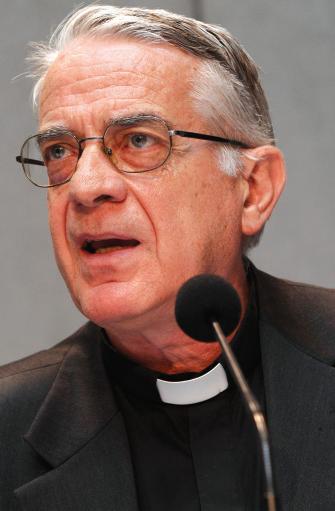
ed on today regard abuse that took place decades ago.
Giovanni Maria Vian, editor of the Vatican newspaper, L’Osservatore Romano, said the goal of the Catholic press has to be “information and formation,” letting people know what is happening in the Church and the world, promoting a civilised conversation
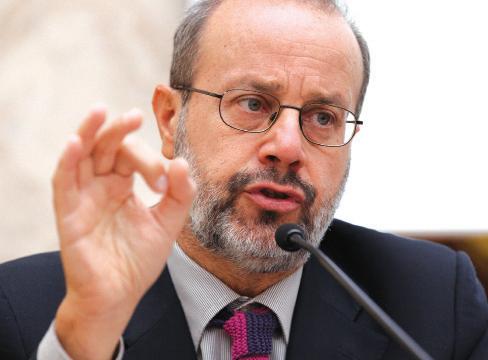
about it and giving people the tools to do something about it. What should make Catholic newspapers different, he said, is its “Catholic vision,” both in the sense of having a universal breadth - “presenting different voices and different continents” - and reflecting “the Christian tradition according to the Church of Rome.”
The Catholic press does have a responsibility to inform and form Catholics, but also must try “to speak to those outside the Church in friendship,” Vian said. To communicate effectively to all parts of the Church and to surrounding society, the Catholic press must use “a language that is not only for the initiated .... If we
speak only with a language that we alone understand, we won’t be heard.”
Vian said it is obvious the Vatican has made mistakes in its attempts to communicate, including recently. But “the Holy See, at least since the time of Pope Pius XI (1922-1939) has been at the vanguard of mass communications” with multilingual editions of Vatican Radio and L’Osservatore Romano, the Vatican website and the Vatican Television Centre.
Jaime Coiro Castro, director of communications for the Bishops’ conference of Chile, brought with him a Chilean flag signed as a witness of continued survival and well-being by the 33 miners who have been trapped underground in the San Jose mine since early August.
“I dream of a Catholic press that is happy to write, like these miners,” he said.
The Catholic press must be a vehicle of communication for and with the thousands of people who “need to be heard and treated with dignity and respect. In that way we will be a responsible and respectful voice in public dialogue,” Coiro said.
VATICAN CITY (CNS)The apostolic visitation of the Catholic Church in Ireland will pay special attention to victims of clerical sex abuse as part of its overall goal of helping the local Church respond adequately to past cases of abuse and to perfect preventative measures, according to the Vatican.
“The visitors will give particular attention to victims of abuse and their families, but will also meet with and listen to a variety of people, including ecclesiastical authorities, lay faithful and those involved with the crucial work of safeguarding children,” said a 6 October Vatican press office statement.
Vatican officials held a series of preparatory and planning meetings with the apostolic visitors named by Pope Benedict XVI and with the Irish Archbishops whose dioceses will be the first to be investigated.
The Irish Church leaders - Cardinal Sean Brady of Armagh, Northern Ireland; and Archbishops Diarmuid Martin of Dublin, Dermot Clifford of Cashel and Emly, and Michael Neary of Tuam - met on 6 October with the prelates conducting the visitations and with officials from the Congregation for Bishops and the Vatican Secretariat of State. The meeting, which was “marked by fraternal warmth and mutual collaboration, summarised the discussions from the previous day and focused on the organisation of the apostolic visitation and the Archdioceses involved,” the Vatican statement said.
On 5 October, the prefect and secretary of the Congregation for Bishops and other Vatican officials met with the four apostolic visitors: British Cardinal Cormac Murphy-O’Connor, retired Archbishop of Westminster, who will conduct the visitation of the Archdiocese of Armagh; Cardinal Sean P O’Malley of Boston, who will visit the Archdiocese of Dublin; Archbishop Thomas Collins of Toronto, who will conduct the visitation of the Archdiocese of Cashel; and
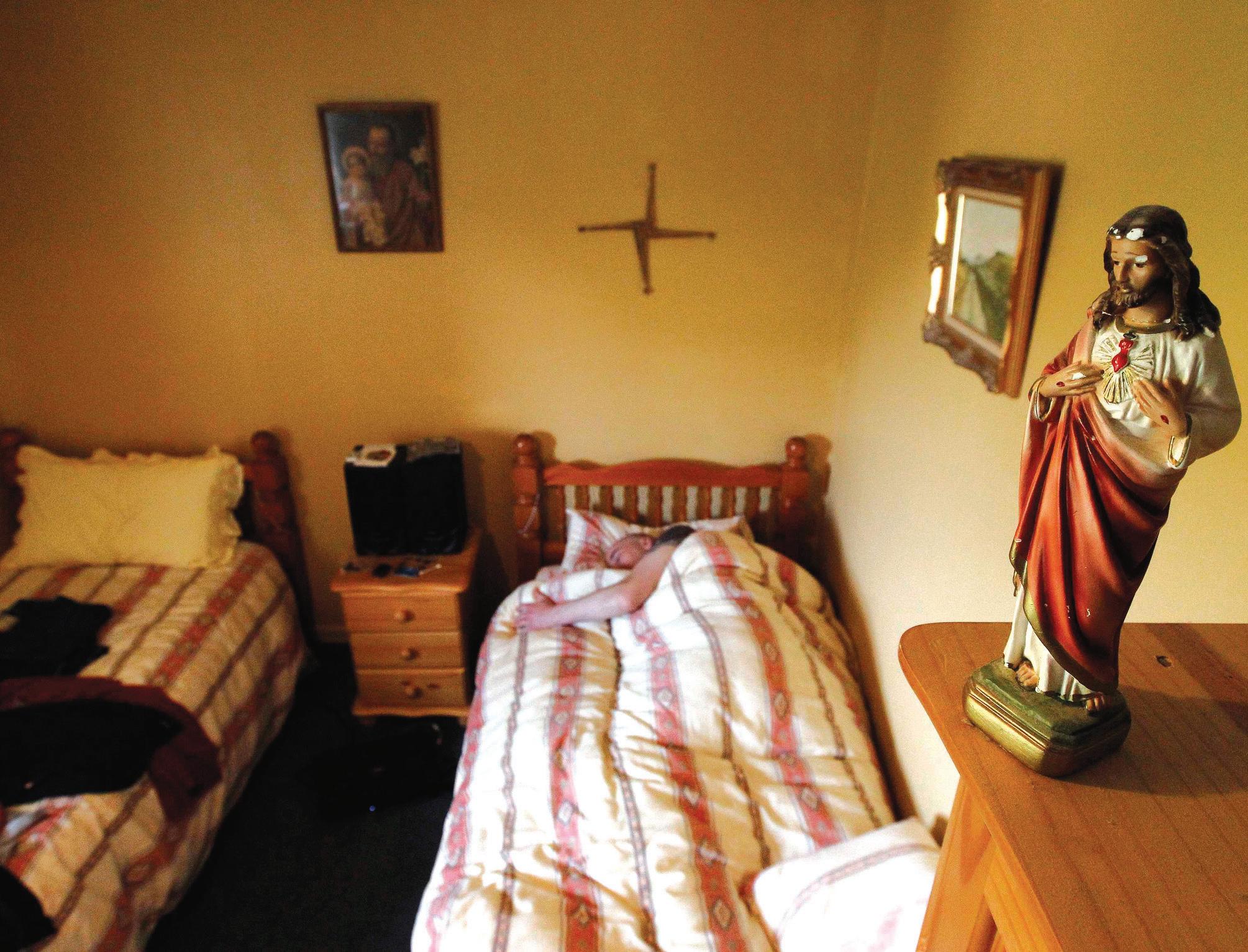
Archbishop Terrence Prendergast of Ottawa, Ontario, who will visit the Archdiocese of Tuam.
“Mindful of the tragic abuse of children that has taken place in Ireland, the participants discussed the particular aspects of this important visitation,” the statement said.
The statement reiterated that the visitation is a sign of the Pope’s desire to “offer his pastoral solicitude to the Church in Ireland” and that the visitation’s aim is to help the local Church “on her path to renewal.”
Pope Benedict announced plans for a visitation in his March letter to Catholics in Ireland, promising to root out the problem that the Church had ignored in the past. Irish Bishops met
with the Pope in February after an independent study known as the Murphy Report said the Church operated with a “culture of secrecy” in dealing with charges of abuse by victims and their families in the Archdiocese of Dublin from 1975 to 2004.
Other reports showed the problem was widespread throughout other dioceses and often involved the complicity of Irish authorities.
While the diocesan visitation initially will involve only the four Archdioceses, other dioceses and Religious Orders will be visited at a later stage.
Pope Benedict also named Archbishop Timothy M Dolan of New York, former rector of the US seminary in Rome, to lead
a visitation of Irish seminaries, including the Pontifical Irish College in Rome.
The Pope named two priests and two Religious women to conduct a visitation of Irish Religious Orders.
Archbishop-designate Joseph W Tobin, secretary of the Vatican congregation for Religious, and Jesuit Fr Gero McLoughlin, promoter of Ignatian spirituality for the Jesuits’ British province, will visit men’s Religious Orders.
US Sister Sharon Holland, a member of the Servants of the Immaculate Heart of Mary and former Vatican official, and Irish Sister Mairin McDonagh, a member of the Religious of Jesus and Mary, will conduct the visitation of the women’s communities.
you’re working in tandem with God, always

Iwas brought up Uniting Church and baptised in that denomination. I attended the classes for Confirmation but didn’t go through with it much to my parents’ horror. I was a bit of a teenage rebel.
Originally, I joined the RCIA group at the Whitfords parish to learn what my children were learning as they are all enrolled in Catholic school. I told the RCIA coordinators that I was not committing and was just going to listen. Three months into the process, I decided I wanted to be Catholic.
 with Debbie Warrier
with Debbie Warrier
A lot of the reason for my converting was because of my children’s school. It has a warm and open community spirit. It is the same with the RCIA group and the Catholic Church. When I described the experience to my parents, I told them it was like having a blanket wrapped around me. I feel comfortable and at home. Catholicism is a warm religion. I still feel like I am on ‘L’ plates though and have to really pay attention in Mass to know where we are up to.
Whitfords parish RCIA coordinator Ann Cunneen makes a great role model. Her knowledge of the faith is remarkable. I joke that if you wanted to know what day Jesus washed someone’s feet, she would be able to tell you the time and what the weather was like! I know anything that I ask can be answered.
Now, when I go to Church, I don’t feel like an outsider. I also feel a little bit more centred in myself. I know that if I am having trouble I have got somewhere to turn to. I don’t remember feeling that way before. It is amazing how many people care. I feel good about the children being in the right place and that we all have the same understanding.
My mum has an aggressive form of Parkinson’s disease. It’s been quite emotional. She has deteriorated quite quickly in these last few months so she is in nursing home care. She can’t walk or speak very well and she needs feeding. She’s the person I used to talk to when I’m upset about something so when I haven’t got my mum to talk to it is kind of nice to go somewhere else. The Church has been a place where I can bare my soul.
Faith makes you stronger. You feel like you can tell Someone all your woes and then get back on your horse again. It’s about me and Him. It’s my time. Many times during Mass I feel like my parish priest Father Joe Tran is talking directly to me. Like when we were trying to decide whether we should put my mum in the nursing home. Father Joe said that if you sit back a bit, the answers to your tougher decisions will come. I went to the hospital after Mass and the doctor said, “Your mum needs to go into a nursing home.” He told us that the decision had come from a higher order. You’re working in tandem with God all the time.

You can’t please everyone. Nevertheless, Pope Benedict XVI, portrayed widely by the media and commentators as some kind of unreconstructed arch-conservative before his recent visit to the UK, won huge support during the trip, including this very British slogan from a supporter.

In 1981, Josef Ratzinger was called to Rome by John Paul II to become the Prefect for the Congregation of the Doctrine of the Faith (the “CDF”), making him the Church’s number 1 doctrinal watch-dog. It became his duty to deal with theologians on the Church’s payroll who were thought to be teaching ideas inconsistent with core teachings of the Catholic faith and to issue statements about matters of faith and morals thought to be contentious. Those who disagreed with his rulings described him as “God’s Rottweiler”, the “Gendarme of the Faith” or “Der Panzer Kardinal”.
As Prefect, he issued documents critical of Marxist liberation theology and upheld the Church’s teaching against the use of contraception, stating that couples who find the teaching difficult to follow are deserving of love and respect, but nonetheless contraception is always an ‘intrinsically disordered act’, that is to say, contrary to God’s plan for creation.
He similarly upheld the teaching against the ordination of women and stated that it belonged to the deposit of the faith, meaning that it was beyond the jurisdiction of any Pope to change it.
He also issued a document in which it was said that it is not unjust to take sexual orientation into account in certain situations such as adoption, service in the military and the employment of teachers. Children, he claimed, are best served by growing up with a mother and a father.
Ecumenical and interfaith dialogue issues were addressed in the document Dominus Iesus. It declared that the mission of the Church is universal, that is, intended to embrace all times and peoples, and that the Catholic faithful are required to profess that the Church founded by Christ ‘subsists in the Catholic Church, governed by the successor of Peter and by the Bishops in communion with Him’.
The words ‘subsists in’ echoed Vatican II and were interpreted
to mean that the Church founded by Christ continues to exist fully only in the Catholic Church, but that outside of her structure, many elements can be found of sanctification and truth in those other ecclesial communities which are not in full communion with the Catholic Church.
This position clashes with the ideas of ‘pluralist theologians’ presented in the fable of the blind men and the elephant.
When the men are asked to describe an elephant some grab hold of its trunk (let’s call them the Muslims), others lock onto his ears (the Catholics), others fix on his tail (the Hindus), while the hindquarters might be held by the Jews and the forequarters by the Buddhists and so on. The point of the fable is that no one religious tradition offers a vision of the whole elephant.
One can find an extensive critique of this fable in Ratzinger’s address to the Sorbonne in 1999 and in his book Truth and Tolerance. Ratzinger believes that Christianity is the only completely true faith.
Other faith traditions may contain elements of truth but these are only fragments of a greater truth revealed to humanity when the Word became flesh and dwelt amongst us.
For these reasons, Ratzinger rejected the idea of reducing the Church’s missionary efforts to the provision of humanitarian aid without any reference to the Gospels.
Also rejected was the notion that somehow a pure enlightened reason might be able to stand outside all religious traditions and judge them from a neutral standpoint.
Consistent with his belief that the Scriptures need to be read from within the horizon of faith itself, Ratzinger argued that in order to understand religion, including Christianity, it is necessary to experience it from within, to have a personal encounter with Christ. His most significant ecumenical achievement as CDF Prefect was the Joint Declaration on the Doctrine of Justification signed with the Lutheran World Federation in 1999.
Bishop George Anderson, head of the Evangelical Lutheran Church of America, publicly acknowledged that it was ‘Ratzinger who untied the knots’ when it looked as though the document would
CNS PHOTO/SUZANNE PLUNKETT, REUTERSbe shipwrecked by officials from the Pontifical Council for the Promotion of Christian Unity.
Ratzinger got the agreement back on track by organising a meeting with the Lutheran leaders at his brother’s house in Regensburg.
Included in this agreement was the notion that the goal of the ecumenical process is unity in diversity, not structural reintegration.
One might conclude that it was those who read the documents of Vatican II through the lens of a hermeneutic of rupture who opposed Ratzinger’s judgements as CDF Prefect and who gave him the pejorative names.
Others established a fan club with a website and merchandise. For every reference to Ratzinger the Rottweiler, there is a coffee mug bearing the words “I love my German Shepherd” beneath Ratzinger’s image.
Those who support the ‘hermeneutic of continuity’ (the idea of an organic development of Church tradition as passed down from the apostles), tend to revere Benedict XVI as someone who has had the courage to stand against the tide of militant secularism and taken the flack for being politically incorrect.
Those who support the ‘hermeneutic of rupture’ tend to regard him as a major obstacle to the realisation of their theological projects.
For many who support the hermeneutic of rupture, the Church should be in favour of such things as contraception and homosexuality and the ordination of women.
At the root of all of these issues are questions about the meaning and purpose of human sexuality and gender difference, and this leads off into the territory of Trinitarian theology where the hottest contemporary theological battles are taking place.
To understand the official Catholic Church teaching on these issues, the best sources are John Paul II’s ‘theology of the body’ lectures, and the publications of Cardinal Angelo Scola, the Patriarch of Venice.
Dr Tracey Rowland is Dean and Permanent Fellow of the John Paul II Institute for Marriage and Family (Melbourne); Honorary Fellow, Campion College, Sydney; Member, Centre for Theology and Philosophy, University of Nottingham, UK and author of Ratzinger’s Faith: the theology of Pope Benedict XVI and Benedict XVI: a guide for the perplexed.

In an earlier column you said that the Anglican Church has not preserved apostolic succession. Can you explain exactly what this is and why the Anglicans have not preserved it?
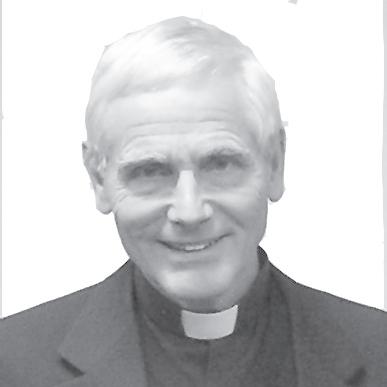 By Fr John Flader
By Fr John Flader
In simple terms, apostolic succession is the continuation of the authority and mission of the apostles down the ages through their successors, the bishops.
When Jesus told the apostles, “I am with you always, to the close of the age” (Mt 28:20), he was obviously promising to be with not only the apostles themselves but their successors down the ages.
That the successors of the apostles are the bishops has always been the teaching of the Church. The Second Vatican Council taught that “by divine institution the bishops have succeeded to the place of the apostles as shepherds of the Church” (Dogm. Const. Lumen gentium, 20).
As the apostles went about establishing the Church in different regions, they entrusted to other men the authority they had received from Christ, giving them the mission to teach, sanctify and rule, and they communicated this power sacramentally through the laying on of hands.
For example, St Paul exhorts Timothy to be faithful to the teaching he has received from Paul and to entrust it in turn to others: “You then, my son, be strong in the grace that is in Christ Jesus, and what you have heard from me before many witnesses entrust to faithful men who will be able to teach others also” (2 Tim 2:2).
Earlier in the same letter, Paul reminds Timothy that he has received his authority through the laying on of hands: “I remind you to rekindle the gift of God that is within you through the laying on of my hands” (2 Tim 1:6).
In 189 AD St Irenaeus invokes apostolic succession as the guarantee of truth in the Church:
“It is possible, then, for everyone in every church, who may wish to know the truth, to contemplate the tradition of the apostles which has been made known to us throughout the whole world. And we are in a position to enumerate those
COLORADO SPRINGS, Colo.
(CNS) -- Officials at a Colorado Springs public school sent a message to students and their parents telling them the school was banning rosaries from being worn as an accessory on top of students’ clothing.
“Students, we need to remind everyone that here at Mann, we respect all religious beliefs. Some members of the Catholic faith are offended by rosaries being worn around the neck like fashion accessories,” said the 7 October memo to students at Mann Middle School that also was sent to their parents. Principal Scott Stanec forwarded the memo to The Colorado Catholic Herald, newspaper of the Colorado Springs Diocese.

who were instituted bishops by the apostles and their successors down to our own times…” (Adv. haer. 3, 3, 1).
Where do we find apostolic succession today? In the first place, we find it in the bishops of the Catholic Church, who can trace their episcopal ordination back in an unbroken line to the apostles.
We also find it in the bishops of the non-Catholic Eastern Churches, customarily known as the Orthodox. Even though they are not in communion with the Pope, they do have valid orders since they have a correct understanding of the sacrament of Orders and they too can trace their ordination back to the apostles.
Apostolic succession exists too in various groups that have separated from the Catholic Church in more recent times.
Among them are the Old Catholics, who separated from the Church in 1870 over the First Vatican Council’s declaration of papal infallibility.
Another more recent group is the Society of St Pius X, formed by Archbishop Marcel Lefebvre in 1969.
When the Archbishop ordained four bishops in 1988 without a mandate from the Holy See, all five were excommunicated and the Society is no longer in communion with the Church, although their bishops and priests are validly ordained (cf. J. Flader, Question Time, Connor Court 2008, p. 225).
“Another more recent group is the Society of St Pius X... no longer in communion with the Church.”
As regards the Anglicans, Pope Leo XIII ruled in the Apostolic Letter Apostolicae Curae in 1896 that they do not have valid orders since the form of words used in their ordination is defective, as is the intention expressed in the words. He took into account that the Protestant errors had been incorporated into the rite of ordination at the time of King Edward VI.
Nonetheless, there are some Anglican bishops and priests today, especially among the Anglo-Catholics, who may have valid orders, since the bishops were ordained by Orthodox or Old Catholic bishops along with an Anglican bishop, all of whom had a proper understanding of Holy Orders and a correct intention.
“If you wish to wear a rosary around your neck, it must, out of respect for others, be worn underneath your shirt,” the memo said. It also stated that students who did not follow the directive would be issued a dress-code violation. In an interview for a 5 October blog post on the website of The Gazette, a Colorado Springs daily newspaper, Msgr. Bob Jaeger, diocesan vicar general, said the diocese did not oppose the decision since “the rosary was made to be an article of faith, an instrument of prayer. It is not jewelry.”
Msgr. Jaeger also affirmed Colorado Springs School District 11’s right to dictate the schools’ dress codes. Msgr. Ricardo Coronado-Arrascue, diocesan judicial vicar and chancellor, echoed Msgr. Jaeger’s sentiments about the wearing of devotionals. “None of (them) are meant to be jewelry. It’s a reminder of your faith,” he told the Herald. “It should also be a way to identify with your faith.”
VATICAN CITY (CNS) --
Asking Christians, Muslims and others who want to become Israeli citizens to pledge loyalty to Israel as a “Jewish and democratic state” does not demonstrate democratic respect for full religious freedom, said a patriarch from Egypt and a bishop from Lebanon.
Coptic Patriarch Antonios Naguib of Alexandria, Egypt, and Maronite Bishop Bechara Rai of Jbeil, Lebanon, were asked about the proposed oath during a news conference on 11 October at the Vatican for the special Synod of Bishops for the Middle East, currently being held in Rome.
The majority of members of the Israeli Cabinet voted on 10 October to require the loyalty oath from new, non-Jewish citizens. The Israeli parliament still has to vote on the oath.
Figures distributed to journalists covering the synod by the Israeli embassy to the Holy See on 8 October reported a total Israeli population of just more than 7.2 million people in 2007.
About 5.5 million of those people are Jewish, about 1.2 million are Muslim, and just 152,000 are Christian.
One of the key topics for discussion at the Middle East synod’s first news conference was how to promote “positive secularism,” a form of separation of government and religion that allows people’s faith to have a role in society without consecrating one religion as the religion of the state.

Follow the truth and let the pope’s record speak for itself.


There is no escaping the fact that Pope Benedict XVI, as the former head of the congregation for the doctrine of the Faith and now as pope, has played a historically pivotal and personal role in the Vatican’s respomse to the crisis.
Now, in the first critically objective and comprehensive assessment of his real response to victims, abusers, bishops, media, and the millions of Catholic followers worldwide, Erlandson and Bunson discover whether Pope Benedict was part of the problem or the solution.
by Gregory Erlandson and Matthew Bunson
In an earlier column you said that the Anglican Church has not preserved apostolic succession. Can you explain exactly what this is and why the Anglicans have not preserved it?
 By Fr John Flader
By Fr John Flader
In simple terms, apostolic succession is the continuation of the authority and mission of the apostles down the ages through their successors, the bishops.
When Jesus told the apostles, “I am with you always, to the close of the age” (Mt 28:20), he was obviously promising to be with not only the apostles themselves but their successors down the ages.
That the successors of the apostles are the bishops has always been the teaching of the Church. The Second Vatican Council taught that “by divine institution the bishops have succeeded to the place of the apostles as shepherds of the Church” (Dogm. Const. Lumen gentium, 20).
As the apostles went about establishing the Church in different regions, they entrusted to other men the authority they had received from Christ, giving them the mission to teach, sanctify and rule, and they communicated this power sacramentally through the laying on of hands.
For example, St Paul exhorts Timothy to be faithful to the teaching he has received from Paul and to entrust it in turn to others: “You then, my son, be strong in the grace that is in Christ Jesus, and what you have heard from me before many witnesses entrust to faithful men who will be able to teach others also” (2 Tim 2:2).
Earlier in the same letter, Paul reminds Timothy that he has received his authority through the laying on of hands: “I remind you to rekindle the gift of God that is within you through the laying on of my hands” (2 Tim 1:6).
In 189 AD St Irenaeus invokes apostolic succession as the guarantee of truth in the Church:
“It is possible, then, for everyone in every church, who may wish to know the truth, to contemplate the tradition of the apostles which has been made known to us throughout the whole world. And we are in a position to enumerate those
COLORADO SPRINGS, Colo.
(CNS) -- Officials at a Colorado Springs public school sent a message to students and their parents telling them the school was banning rosaries from being worn as an accessory on top of students’ clothing.
“Students, we need to remind everyone that here at Mann, we respect all religious beliefs. Some members of the Catholic faith are offended by rosaries being worn around the neck like fashion accessories,” said the 7 October memo to students at Mann Middle School that also was sent to their parents. Principal Scott Stanec forwarded the memo to The Colorado Catholic Herald, newspaper of the Colorado Springs Diocese.

who were instituted bishops by the apostles and their successors down to our own times…” (Adv. haer. 3, 3, 1).
Where do we find apostolic succession today? In the first place, we find it in the bishops of the Catholic Church, who can trace their episcopal ordination back in an unbroken line to the apostles.
We also find it in the bishops of the non-Catholic Eastern Churches, customarily known as the Orthodox. Even though they are not in communion with the Pope, they do have valid orders since they have a correct understanding of the sacrament of Orders and they too can trace their ordination back to the apostles.
Apostolic succession exists too in various groups that have separated from the Catholic Church in more recent times.
Among them are the Old Catholics, who separated from the Church in 1870 over the First Vatican Council’s declaration of papal infallibility.
Another more recent group is the Society of St Pius X, formed by Archbishop Marcel Lefebvre in 1969.
When the Archbishop ordained four bishops in 1988 without a mandate from the Holy See, all five were excommunicated and the Society is no longer in communion with the Church, although their bishops and priests are validly ordained (cf. J. Flader, Question Time, Connor Court 2008, p. 225).
“Another more recent group is the Society of St Pius X... no longer in communion with the Church.”
As regards the Anglicans, Pope Leo XIII ruled in the Apostolic Letter Apostolicae Curae in 1896 that they do not have valid orders since the form of words used in their ordination is defective, as is the intention expressed in the words. He took into account that the Protestant errors had been incorporated into the rite of ordination at the time of King Edward VI.
Nonetheless, there are some Anglican bishops and priests today, especially among the Anglo-Catholics, who may have valid orders, since the bishops were ordained by Orthodox or Old Catholic bishops along with an Anglican bishop, all of whom had a proper understanding of Holy Orders and a correct intention.
“If you wish to wear a rosary around your neck, it must, out of respect for others, be worn underneath your shirt,” the memo said. It also stated that students who did not follow the directive would be issued a dress-code violation. In an interview for a 5 October blog post on the website of The Gazette, a Colorado Springs daily newspaper, Msgr. Bob Jaeger, diocesan vicar general, said the diocese did not oppose the decision since “the rosary was made to be an article of faith, an instrument of prayer. It is not jewelry.”
Msgr. Jaeger also affirmed Colorado Springs School District 11’s right to dictate the schools’ dress codes. Msgr. Ricardo Coronado-Arrascue, diocesan judicial vicar and chancellor, echoed Msgr. Jaeger’s sentiments about the wearing of devotionals. “None of (them) are meant to be jewelry. It’s a reminder of your faith,” he told the Herald. “It should also be a way to identify with your faith.”
VATICAN CITY (CNS) --
Asking Christians, Muslims and others who want to become Israeli citizens to pledge loyalty to Israel as a “Jewish and democratic state” does not demonstrate democratic respect for full religious freedom, said a patriarch from Egypt and a bishop from Lebanon.
Coptic Patriarch Antonios Naguib of Alexandria, Egypt, and Maronite Bishop Bechara Rai of Jbeil, Lebanon, were asked about the proposed oath during a news conference on 11 October at the Vatican for the special Synod of Bishops for the Middle East, currently being held in Rome.
The majority of members of the Israeli Cabinet voted on 10 October to require the loyalty oath from new, non-Jewish citizens. The Israeli parliament still has to vote on the oath.
Figures distributed to journalists covering the synod by the Israeli embassy to the Holy See on 8 October reported a total Israeli population of just more than 7.2 million people in 2007.
About 5.5 million of those people are Jewish, about 1.2 million are Muslim, and just 152,000 are Christian.
One of the key topics for discussion at the Middle East synod’s first news conference was how to promote “positive secularism,” a form of separation of government and religion that allows people’s faith to have a role in society without consecrating one religion as the religion of the state.

Follow the truth and let the pope’s record speak for itself.


There is no escaping the fact that Pope Benedict XVI, as the former head of the congregation for the doctrine of the Faith and now as pope, has played a historically pivotal and personal role in the Vatican’s respomse to the crisis.
Now, in the first critically objective and comprehensive assessment of his real response to victims, abusers, bishops, media, and the millions of Catholic followers worldwide, Erlandson and Bunson discover whether Pope Benedict was part of the problem or the solution.
by Gregory Erlandson and Matthew BunsonPanorama entries must be in by 12pm Monday.
Contributions may be emailed to office@therecord.com.au, faxed to 9325 4580, or mailed to PO Box 3075, Adelaide Terrace, Perth WA 6832.
FRIDAY, 15 OCTOBER
WA Mental Health Week and Carers Week
7.30pm at St John’s Church, 16 Aberdeen St, Northbridge. Spirit of the Streets Choir in concert with Bernard Carney. Tickets for adults $20, for children $15. Enq: Harry 9444 4626, Irene 0433 789 785 or Adrian 0424 791 665.
SATURDAY, 16 OCTOBER
2010 Disciples of Jesus Annual Ball
7.30pm at Rendezvous Hotel. A night of celebration, great music, food and dancing. Theme: Black and White. Enq: Janny 0420 635 919.
St Joseph’s School Wagin Reunion
11am at the old school grounds. For all past students. Enq: Ronnie 9861 1422.
WEDNESDAY, 20 OCTOBER
Lesmurdie Mental Health Support Group Meeting
6-8pm at Our Lady of Lourdes Parish Hall, 207 Lesmurdie Road, Lesmurdie. Let Mary the mother of sorrows accompany you on your way of the Cross. Please bring a plate of food to share. Enq: Ann 9291 6670 or Barbara 9328 8113.
SATURDAY, 23 OCTOBER
Greenwood World Youth Day Group – Car Boot Sale
9am-1pm at All Saints Catholic Church, 7 Liwara Place, Greenwood. Money raised goes towards the World Youth Day trip, Spain 2011. Fill your car boot with things to sell, keep or donate the money you make. Sellers $10 per car and buyers gold coin donation. Sausage sizzle. Thank you for your support.
SUNDAY, 24 OCTOBER
Focolare Movement – Invitation to a Family Day
10am at Little Sisters of the Poor, Glendalough. Mass followed by a programme focusing on themes of God as Love and Christian Loving in the Family from 11am to 4pm. Separate programme for children and teenagers. Open to everyone, the day is a time for gathering and spiritual renewal. Bring a shared plate for lunch. Enq: 9349 4052 or visit www.focolare.org.
MONDAY, 25 OCTOBER
CYM World Youth Day 2011 Pilgrimage Meeting
7.30pm at Perth Catholic Pastoral Centre, 40A Mary St, Highgate. Catholic Youth Ministry is organising the official Archdiocese of Perth pilgrimage to World Youth Day in Madrid next year. If you have already been saving or still unsure and want to know more, come along to our information night. Go to www.cym.com.au and fill out expression of interest form. Enq: 9422 7912.
THURSDAY, 28 OCTOBER
Morley Mental Health and Wellness Support Group Meeting
7pm at Infant Jesus Church Hall at 47 Wellington Rd, Morley. Rula Cummins and Fr Kevin Cummins, Chaplain of Graylands Hospital, will share what is happening in Catholic Mental Health Ministry. Come and be awakened to a ministry which touches hundreds of people each year. Enq: Darren 9276 8500 or Barbara 9328 8113.
SUNDAY, 31 OCTOBER
Variety Concert and Cake Stall
2pm at Little Sisters Community Hall, 2 Rawlins St, Glendalough. Fundraising concert to assist the Homeless and the Aged will be held in the presence of His Grace Archbishop Barry Hickey. Featuring The Julian Singers, Local Seniors and Young Talents, Instrumentalists. Tickets $10. Sing along to old favourites. Enq: Mary 9443 3963 or Angela 9275 2066.
FRIDAY, 5 NOVEMBER THURSDAY, 11 NOVEMBER
Creation Spirituality Retreat
St John of God Retreat Centre, Shoalwater. For the weekend or week. Enq: Sr Shelley Barlow and registration 0428 772 784.
SATURDAY, 6 NOVEMBER
Love Ministries-Charismatic Healing and Mass 6pm at All Saints, 7 Liwara Pl, Greenwood. Get prayed over and healed from past and present issues or stand in for a loved one who may be ill or facing problems at this time. All welcome. Enq: Fr Giosue 9349 2315 or Gilbert 0431 570 322.
SUNDAY, 7 NOVEMBER
Schoenstatt Spring Fair
9.30am-2pm at 9 Talus Dr, Armadale. A family affair with entertainment for the children, international food, a variety of stalls, prizes, silent auctions and lots more. Bring all the family and help support the Schoenstatt Sisters, and visit our beautiful shrine where you can leave all your requests and petitions. Enq: 9455 3140.
TUESDAY, 9 NOVEMBER
Council of Christians and Jews WA Inc –Commemoration of Kristallnacht (Night of Broken Glass)
4pm at Perth Synagogue, Freedman Road, Menora. Guest speaker Fr Stephen Astill SJ, Senior Lecturer, Notre Dame University. Light refreshments served. All welcome. RSVP by Friday, 5 November. Enq: 9271 0539 or ccjwa@aol. com.
SATURDAY, 13 NOVEMBER
St Padre Pio Day of Prayer
8.30am at Little Sisters of the Poor, 2 Rawlins St, Glendalough. DVD followed by Exposition of the Blessed Sacrament, Rosary, Divine Mercy, Silent Adoration and Benediction at 10am. 11am Mass, St Padre Pio Liturgy, Confessions available. Bring a plate for shared lunch. Tea and coffee supplied. Enq: Des 6278 1540.
EVERY SUNDAY
Pilgrim Mass - Shrine of the Virgin of the Revelation 2pm at Shrine, 36 Chittering Rd, Bullsbrook. Commencing with Rosary followed by Benediction. Reconciliation is available before every celebration. Anointing of the Sick administered during Mass every second Sunday of the month. Pilgrimage in honour of the Virgin of the Revelation, last Sunday of the month. Side entrance to the church and shrine open daily between 9am-5pm. Enq Sacri 9447 3292.
EVERY SUNDAY AND MONDAY
Extraordinary Form of Latin Holy Mass
11am Sunday and 7.30pm Monday except 3rd Monday of the month, at St Joseph’s Parish, 20 Hamilton St, Bassendean.
THIRD SUNDAY OF THE MONTH
Oblates of St Benedict
2pm at St Joseph’s Convent, York St, South Perth. Oblates are affiliated with the Benedictine Abbey of New Norcia. All welcome to study the rule of St Benedict and its relevance to the everyday life of today for lay people. Vespers and tea later. Enq: Secretary 9457 5758.
EVERY FOURTH SUNDAY OF THE MONTH
Holy Hour for Vocations to the Priesthood, Religious Life
2-3pm at Infant Jesus Parish, Wellington St, Morley. The hour includes Exposition of the Blessed Eucharist, silent prayer, Scripture and prayers of intercession. Come and pray that those discerning vocations to the priesthood or Religious life hear clearly God’s loving call to them.
LAST MONDAY OF EVERY MONTH
Christian Spirituality Presentation
7.30-9.15pm at the Church hall behind St Swithan’s Anglican Church, 195 Lesmurdie Rd, Lesmurdie. Stephanie Woods presents The Desert Period of Christianity, 260 to 600AD. From this time period came the understanding of the monastic lifestyle and contemplative prayer. No cost. Enq Lynne 9293 3848.
EVERY TUESDAY NIGHT
Novena and Benediction to Our Lady of the Miraculous Medal
6pm at the Pater Noster Church, Marmion and Evershed Sts, Myaree. Mass at 5.30pm. Enq: John 0408 952 194.
EVERY WEDNESDAY
Holy Spirit of Freedom Community
7.30pm at The Church of Christ, 111 Stirling St, Perth. We are delighted to welcome everyone to attend our Holy Spirit of Freedom Praise Meeting. Enq 9475 0155 or hsofperth@gmail.com.
SECOND WEDNESDAY OF THE MONTH
Chaplets of the Divine Mercy
7.30pm at St Thomas More Catholic Church, Dean Rd, Bateman. A beautiful and prayerful sung devotion. Accompanied by Exposition and followed by Benediction. All are welcome. Enq: George 9310 9493 home or 9325 2010 work.
EVERY THURSDAY
Cathedral Praise Meeting
7.45pm at 450 Hay St, Perth. A journey of Intercessory Prayer, Revelation and Healing by Kaye Rollings, FMI. Please bring a Bible. Enq: 9382 3668 or 0439 981 515.
Catholic Questions and Answers
7-7.30pm at St Joseph’s Parish Centre, 20 Hamilton St, Bassendean. Catechesis learned easily with questions and answers. The Catechism of the Catholic Church. Adult learning and deepening of the Catholic Faith, with Fr John Corapi DVD series, 7.30-9pm.
Divine Mercy
11am at St John and Paul Church, Pine Tree Gully Rd, Willetton. Pray the Rosary and Chaplet of Divine Mercy, and for the consecrated life especially here in John Paul parish, conclude with veneration of the First Class Relic
of Saint Faustina. Please do come and join us in prayer. Enq: John 9457 7771.
EVERY FIRST THURSDAY OF THE MONTH
Taize - Invitation to Prayer in Our Community
7.30-8.30pm at Our Lady Of Grace Church, 3 Kitchener St, North Beach. Taize Prayer is a meditation in which we pray beautiful chants together and spend time in prayerful silence. Christ is present in each of us and we pray as one. Enq: Joan 9448 4457 or Parish 9448 4888.
FIRST FRIDAY OF THE MONTH
Catholic Faith Renewal Evening
7.30pm at St John and Paul’s Parish, Pinetree Gully Rd, Willetton. Songs of Praise, sharing by a Priest followed by Thanksgiving Mass and light refreshments after Mass. All welcome to attend and bring your family and friends. Enq: Kathy 9295 0913, Ann: 0412 166 164 or catholicfaithrenewal@gmail.com.
The Alliance, Triumph and Reign of the United Hearts of Jesus and Mary.
9pm at St Bernadette’s Church, Glendalough. Commences with exposition of the Blessed Sacrament followed by Reflections, Rosary and alternating with healing sessions. Vigil concludes with the Holy Mass at midnight. Come, be healed and be part of the Lord’s Mighty Work. Enq: Fr Doug 9444 6131 or Dorothy 9342 5845.
Healing Mass
7pm at St Peter’s Parish, Wood St, Inglewood. Reconciliation, praise and worship, exposition of Blessed Sacrament, Benediction, anointing of the sick, and special blessiwng. Celebrants Fr Sam and other clergy. All welcome. Enq: Priscilla 0433 457 352, Catherine 0433 923 083 or Mary-Ann 0409 672 304.
Panorama - read by everyone
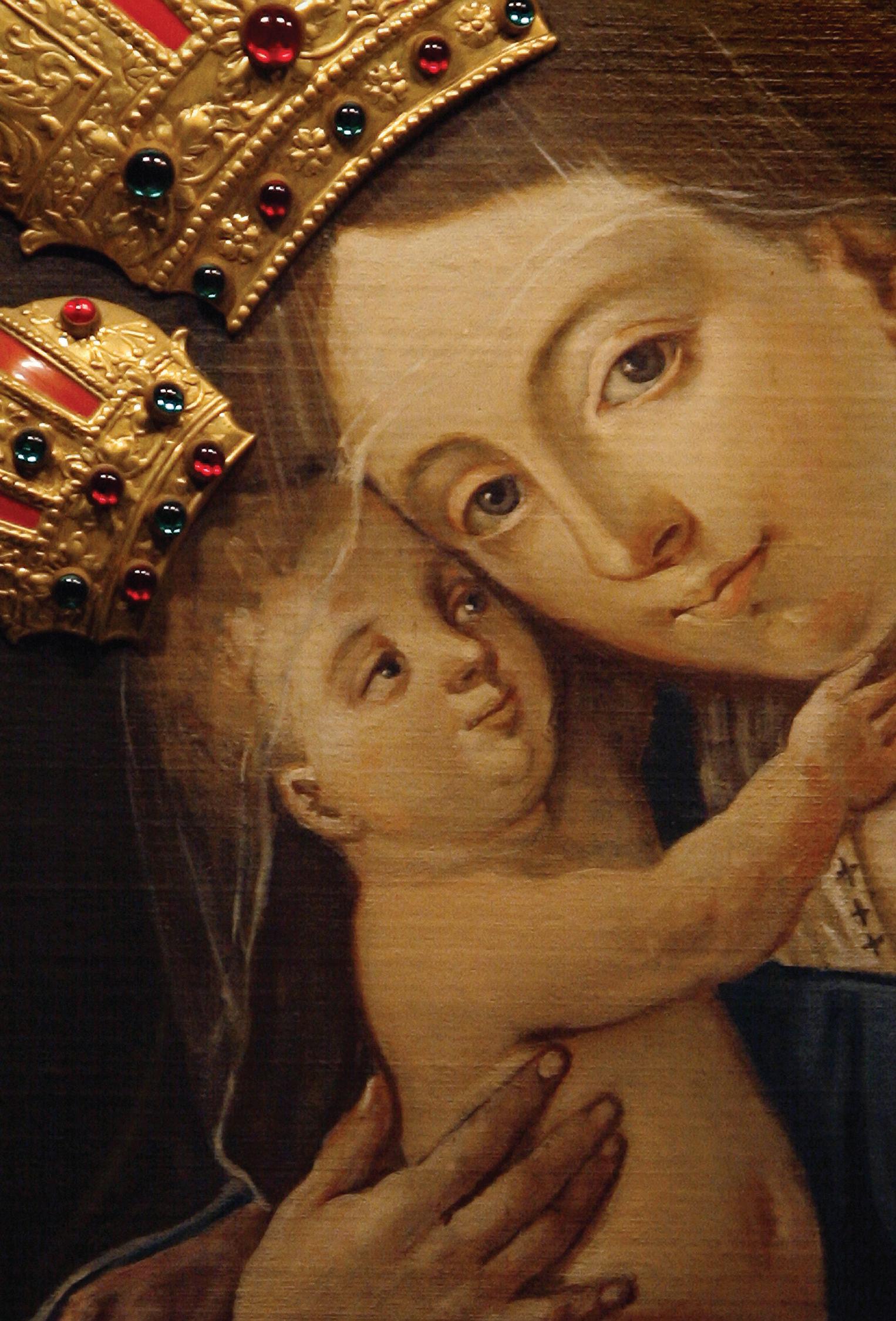

ACROSS
4 Saucer for the Eucharist
9 Administer extreme unction
10 Martyred Salvadoran, Bishop Romero
11 “… the fish of the sea and the birds of the ___.” (Gn 1:26)
12 Originally he was called Simon
13 First patriarch
14 An archangel
17 ____ Night
19 First woman
21 “Give us this day our ____ …”
22 Ishmael to Jacob
23 Peter cut this off the soldier of the high priest
25 You can follow the Mass with this
26 He lead a revolution against his father, David
29 Catholic author, JRR ____
31 Church dignitary
33 Hebrew for “son of”
34 God sent this to the Israelites
35 Catholic Actress Dunne
36 Spiritual programme
DOWN
1 One of the Magi
2 “They shall ___ their swords into plowshares …” (Is 2:4)
3 “Angel of God, my guardian ____ …”
4 Teaching story by Jesus
5 Saint of Lisieux
6 Ark builder
7 Type of council
8 Religious group of men or women
15 What Goliath was 16 “… and darkness covered the ___.” (Gn 1:2)
18 Prayer time
20 ____ Dolorosa
23 Kyrie ____ 24 Godʼs sign to Noah
27 Creche piece
28 Most important teaching
30 “If anyone says, “I love God,” but hates his brother, he is a ____” (I Jn 4:20)
31 What the manger was for the Baby Jesus
32 French Christmas
LAST WEEK’S SOLUTION


HOLIDAY ACCOMMODATION
ESPERANCE 3 bedroom house f/furnished Ph 09 9076 5083.
HOLIDAY RENTAL Scarborough. Self contained unit. Sleeps 6. Walk to beach. Ph 0402 673 409.
BOOK REPAIR SERVICE
New book binding, general book repairs, rebinding, new ribbons; old leather bindings restored. Tydewi Bindery 9377 0005.
WORK FROM HOME
P/T or F/T, 02 8230 0290 or visit www.dreamlife1.com.
BRENDON HANDYMAN
SERVICES Home, building maintenance, repairs and renovations. NOR. Ph 0427 539 588.
BRICK RE-POINTING
Ph Nigel 9242 2952.
PERROTT PAINTING Pty Ltd
For all your residential, commercial painting requirements. Ph Tom Perrott 9444 1200.
PICASSO PAINTING Top service. Ph 0419 915 836, fax 9345 0505.
WRR LAWN MOWING & WEED SPRAYING Garden clean ups and rubbish removal. Get rid of bindii, jojo and other unsightly weeds. Based in Tuart Hill. Enq 9443 9243 or 0402 326 637.
CATHOLICS CORNER Retailer of Catholic products specialising in gifts, cards and apparel for Baptism, Communion and Confirmation. Ph 9456 1777. Shop 12, 64-66 Bannister Rd, Canning Vale. Open Mon-Sat.
OTTIMO Convenient city location for books, CDs/DVDs, cards, candles, statues, Bibles, medals and much more. Shop 108, Trinity Arcade (Terrace level), 671 Hay St, Perth. Ph 9322 4520. Mon-Fri 9am-6pm.
RICH HARVEST YOUR CHRISTIAN SHOP Looking for Bibles, CDs, books, cards, gifts, statues, Baptism/Communion apparel, religious vestments, etc? Visit us at 39 Hulme Ct (off McCoy St), Myaree, Ph 9329 9889 (after 10.30am Mon to Sat). We are here to serve.
KINLAR VESTMENTS Quality hand-made and decorated vestments: Albs, Stoles, Chasubles, altar linen, banners etc. 12 Favenc Way, Padbury. By appointment only. Ph Vicki 9402 1318 or 0409 114 093.
The Record Classifieds email: office@therecord.com.au or tel: 9220 5900
Creatures thank you
Lk10:1-9 The harvest is rich
19 Tu Ss John of Brebeuf and Isaac Jogues, priests, and companions
Gr martyrs (O); St Paul of the Cross, priest (O) Eph 2:12-22 No longer aliens
Ps 84:9-14 A voice of peace
Lk 12:35-48 Your lamps lit
20 W Eph 3:2-12 The mystery of Christ
Gr Isa 12:2-6 The Lord my strength
Lk 12:39-48 Unexpected coming
21 Th Eph 3:14-21 Built on love
Gr Ps 32:1-2.4-5.11-12.18-19 Chosen people
Lk 12:49-53 Division, not peace
22 F Eph 4:1-6 Lead a worthy life
Gr Ps 23:1-6 To seek God’s face
Lk 12:54-59 Judge rightly
23 S St John of Capistrano, priest (O)
Gr Eph 4:7-16 Live by the truth
Ps 121:1-5 The house of the Lord
Lk 13:1-9 You will all perish
FR TOM GAINE who was appointed the founding parish priest of Girrawheen in 1979 and directed the building of Our Lady of Mercy Parish church, has passed away in Ireland.
Perth Vicar General Monsignor Brian O’Loughlin wrote to Perth clergy last week to inform them of Fr Gaine’s passing.
Fr Gaine retired in 2002 and returned to Ireland to take up residence on the family farm at Lissyclerig, Kenmare, Co Kerry.
Unfortunately, his brother with whom he intended to live out his twilight years on the farm, died suddenly.
Recently, Fr Tom had a fall and fractured his femur and was hospitalised in Tralee Hospital. He was transferred to the Coronary Care Unit where he was anointed. He passed away at 7.45 pm (Perth time) on 4 October.
Fr Gaine was born on 23 November 1929 at Kenmare, Ireland. He was ordained a Priest of the Archdiocese of Perth on 2 June 1957 at St Kieran’s Seminary Chapel, Kilkenny.
He served as Curate at Northam, Kalgoorlie and Claremont between 1957 and 1966, including chaplaincy at the Mental Hospital, Graylands Migrant Hostel and Karrakatta Cemetery.
He served as Administrator of Highgate while Bishop McKeon was Auxiliary Bishop. He was transferred to East Victoria Park on 28 September 1969 and then Priest-in-Charge at Quairading and later locum tenens (temporary Parish Priest) at Pinjarra from February 1973.
He then served as Port Chaplain and Director of the Stella Maris Seafarers Centre in Fremantle. In August 1979, he was appointed founding Parish Priest of Girrawheen and was responsible for forming the new parish community. At recent Parish celebrations, his efforts to lay a solid foundation for a bustling parish were recalled, as was the publication of his autobiography Winter Has Passed
During the Year of the Priest in June last year, Fr Gaine (although absent in Ireland) was awarded the Croce Pro Ecclesia et Pontifice (Cross for the Church and Pontiff) award founded by Pope Leo XIII in 1888.
He was one of eleven Perth priests to receive the award that marked their fiftieth priestly jubilee.
A tribute to Fr Gaine will appear in next week’s Record. - Ed.
Just days before the historic canonisation of Mary MacKillop, Josephite Sisters concluded a series of reflections at Notre Dame University inspired by Australia’s first official Saint
As part of their final reflection on the life and experiences of Blessed Mother Mary MacKillop, the Sisters of St Joseph shared their thoughts at Notre Dame University in Fremantle in a presentation entitled Virtues, exploring what it truly means to trust in God.
Sister Kathleen and Sister Leonie spoke about the trials Blessed Mother Mary MacKillop faced and how she, in the face of strong adversity, never gave up hope and faith in her beloved God.
During the inspirational presentation, the Sisters gently reminded all in the Chapel to take heart from Blessed Mary’s single-mindedness and faith, even when all hope seems lost.
“Don’t be afraid to leave a legacy like Mary,” said Kathleen. “God will always provide.”
Amy Rosario, the President of the UNDA Student Association at Fremantle, is looking forward to sharing the canonisation of Blessed Mother Mary with the Sisters at the Mary MacKillop Festival, Mouat Street, Fremantle from 1pm – 7pm this Sunday – all are welcome. UNDA COMMUNICATIONS
Notre Dame Student Association President Amy Rosario, top, thanks the Sisters of Saint Joseph at the final presentation “The Virtues of Blessed Mother Mary MacKillop.” Sister Leonie Mayne, Amy Rosario and Sister Kathleen Dawe after the presentation. The Sisters, below, with Notre Dame students, staff and friends at the final presentation entitled “The Virtues of Blessed Mother Mary MacKillop.” PHOTOS: COURTESY, UNDA



f you’re finding Christmas shopping difficult because you don’t know what to get, look again. The Record Bookshop’s Gift Vouchers take any anxiety out of spending so much time searching for a gift that will mean something special for family or friends. Our suggestion: you can let them choose instead!
Simply drop in to the Bookshop at 21 Victoria Square, opposite St Mary’s Cathedral, and purchase a Gift Voucher from $5 upwards. Attractively presented on marbled special print paper a Record Bookshop Gift Voucher can be redeemed against any of the hundreds of books, CDs, DVDs and St Mary’s Cathedral Jarrah products on sale in the Bookshop.
Inquiries: Bibiana on (08) 9220 5900, or bookshop@therecord.com.au

